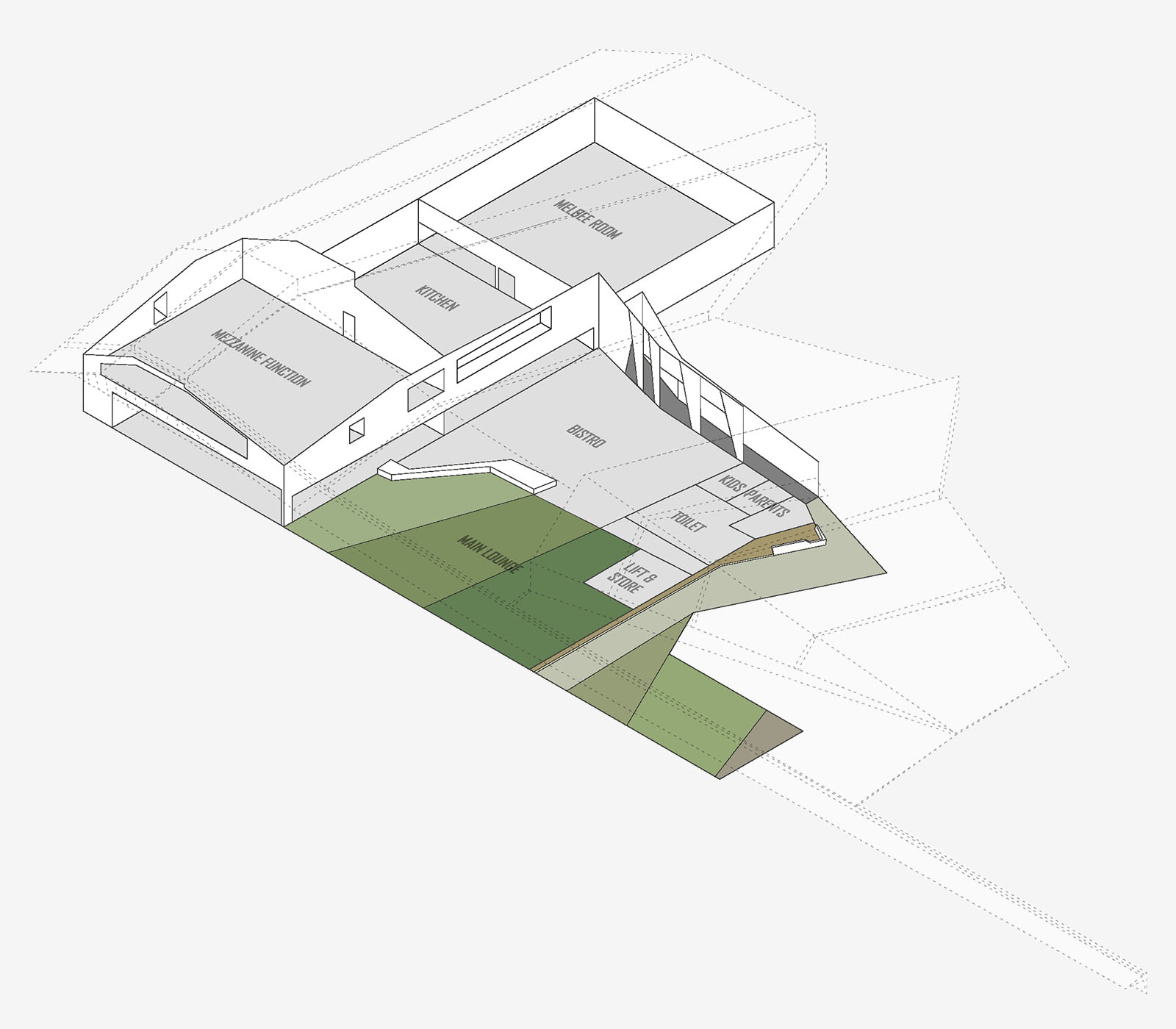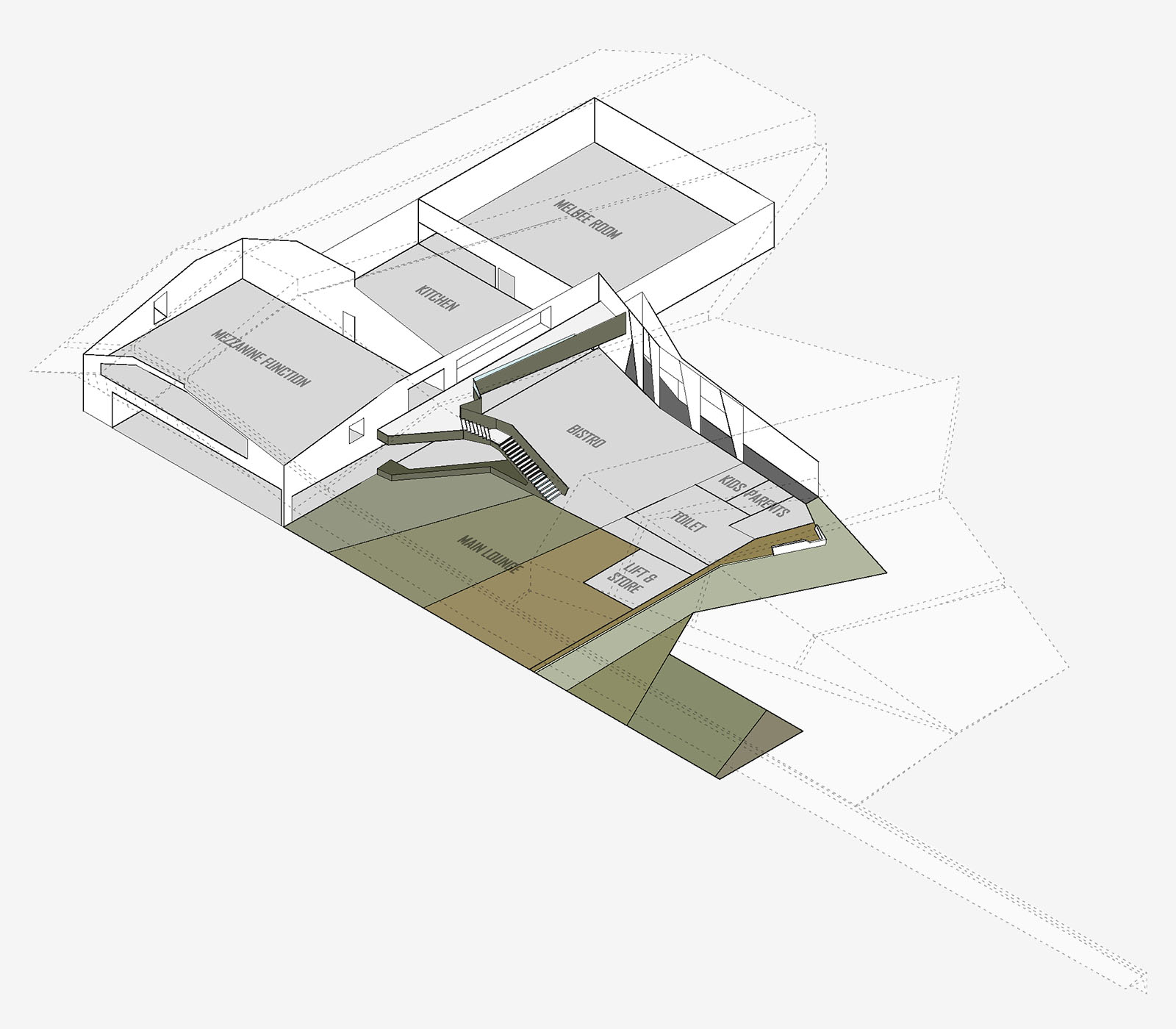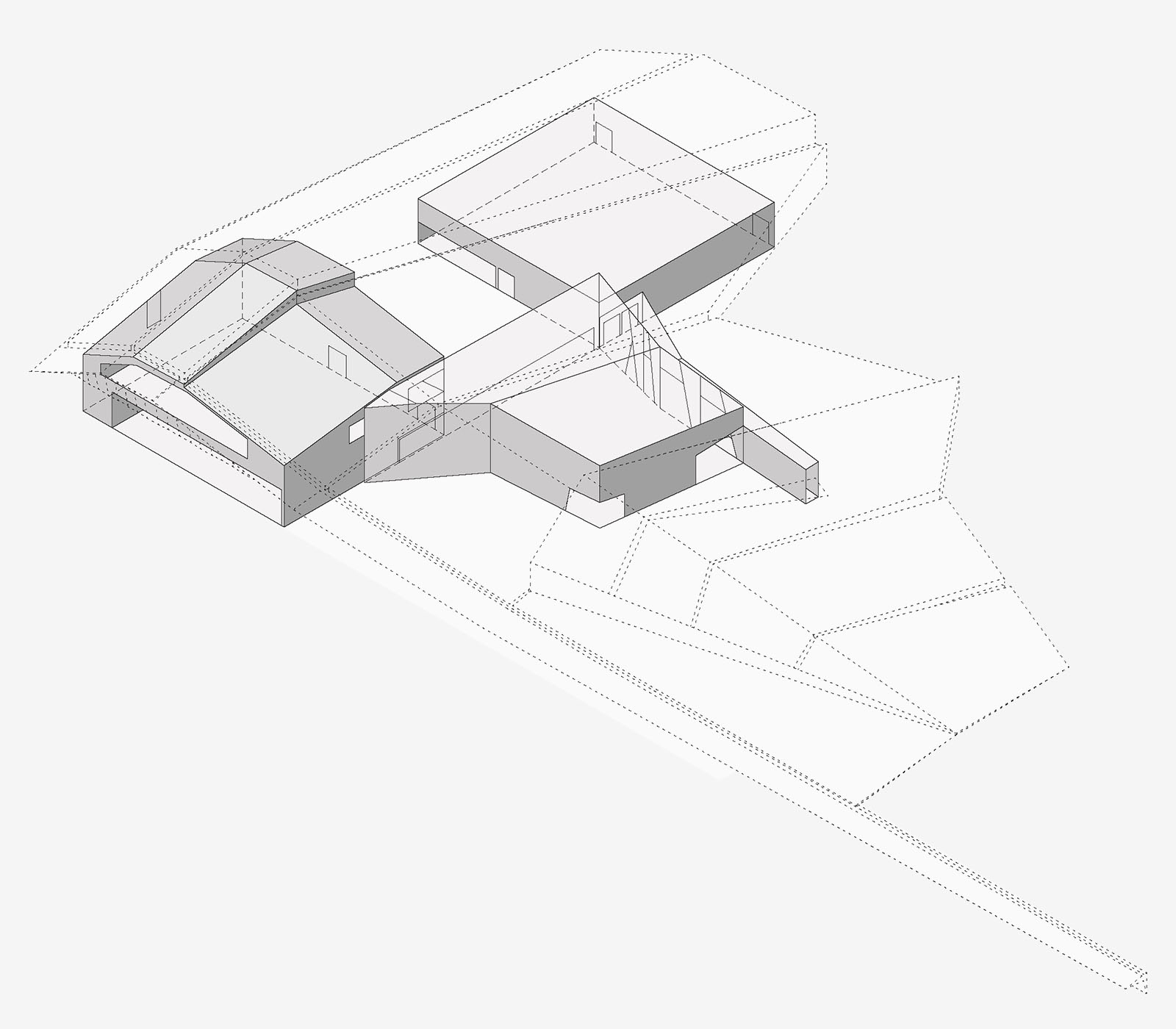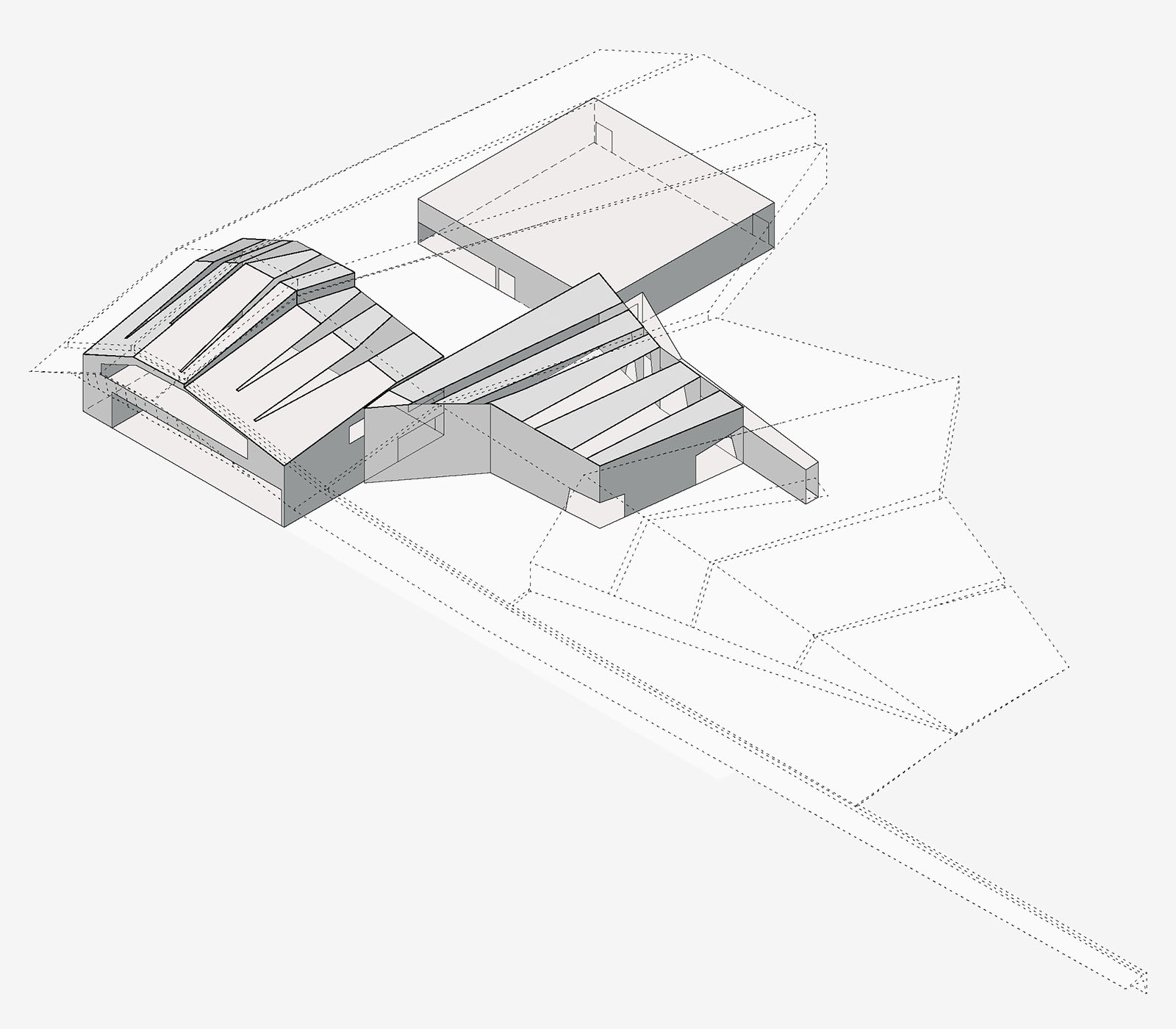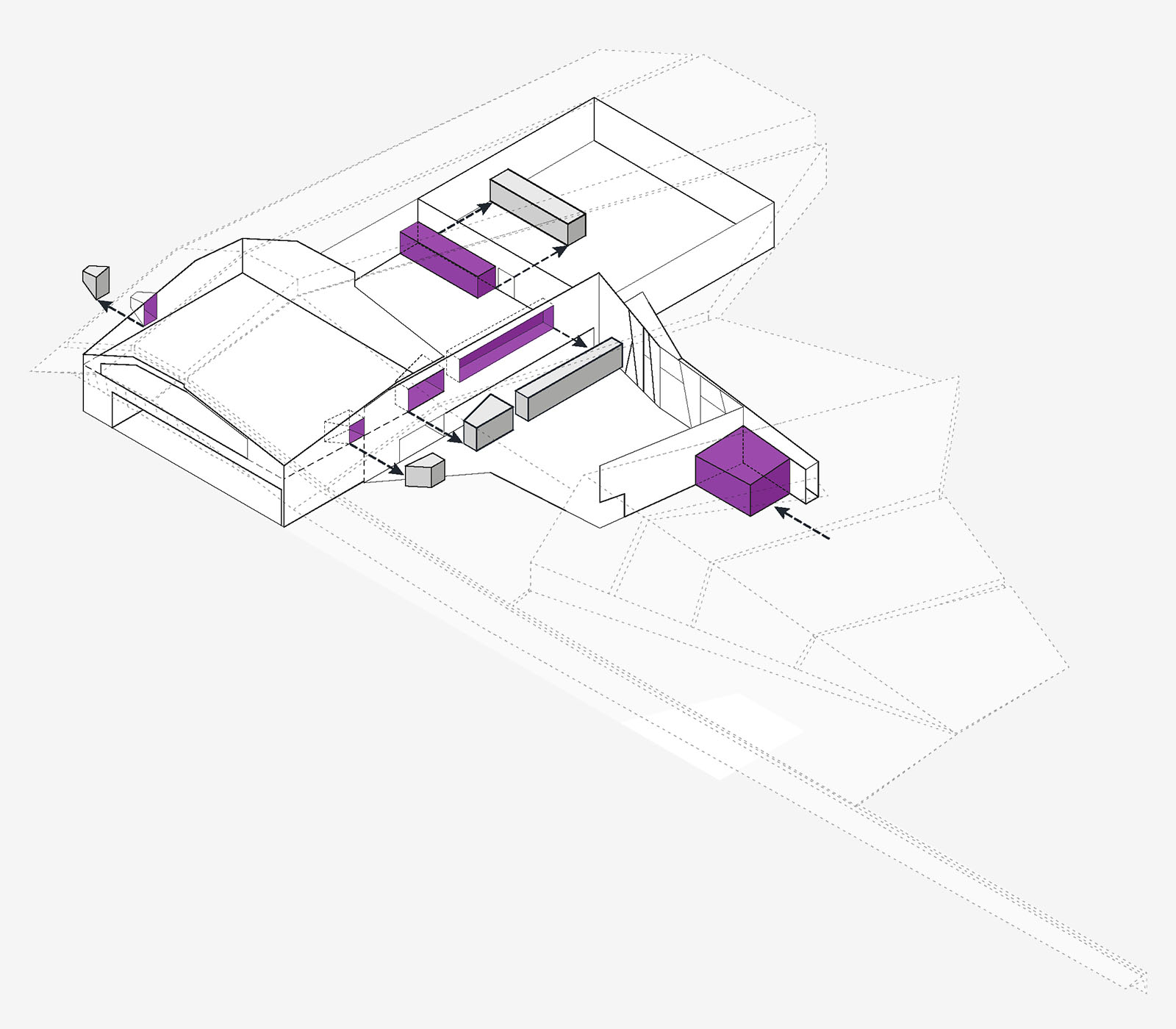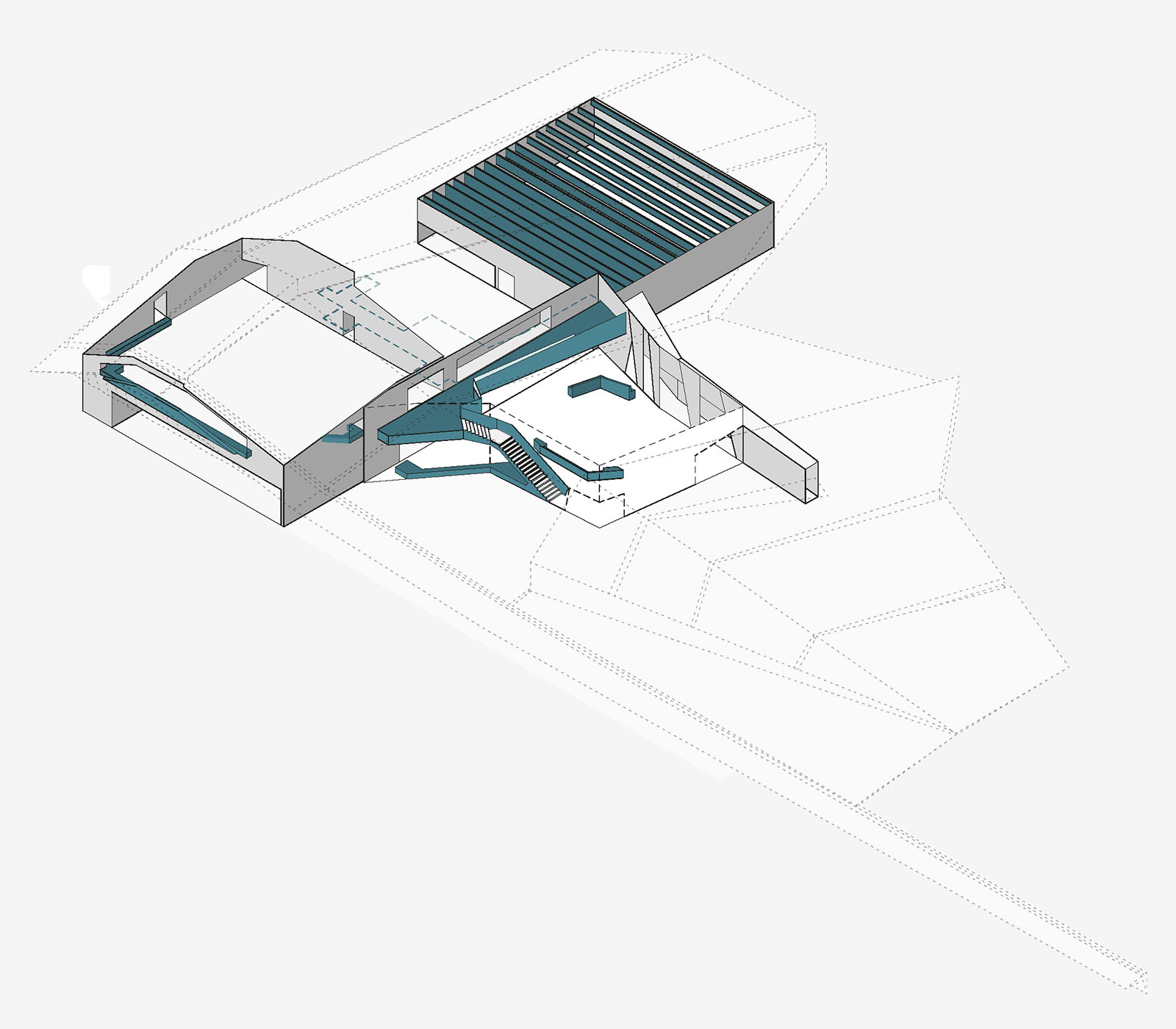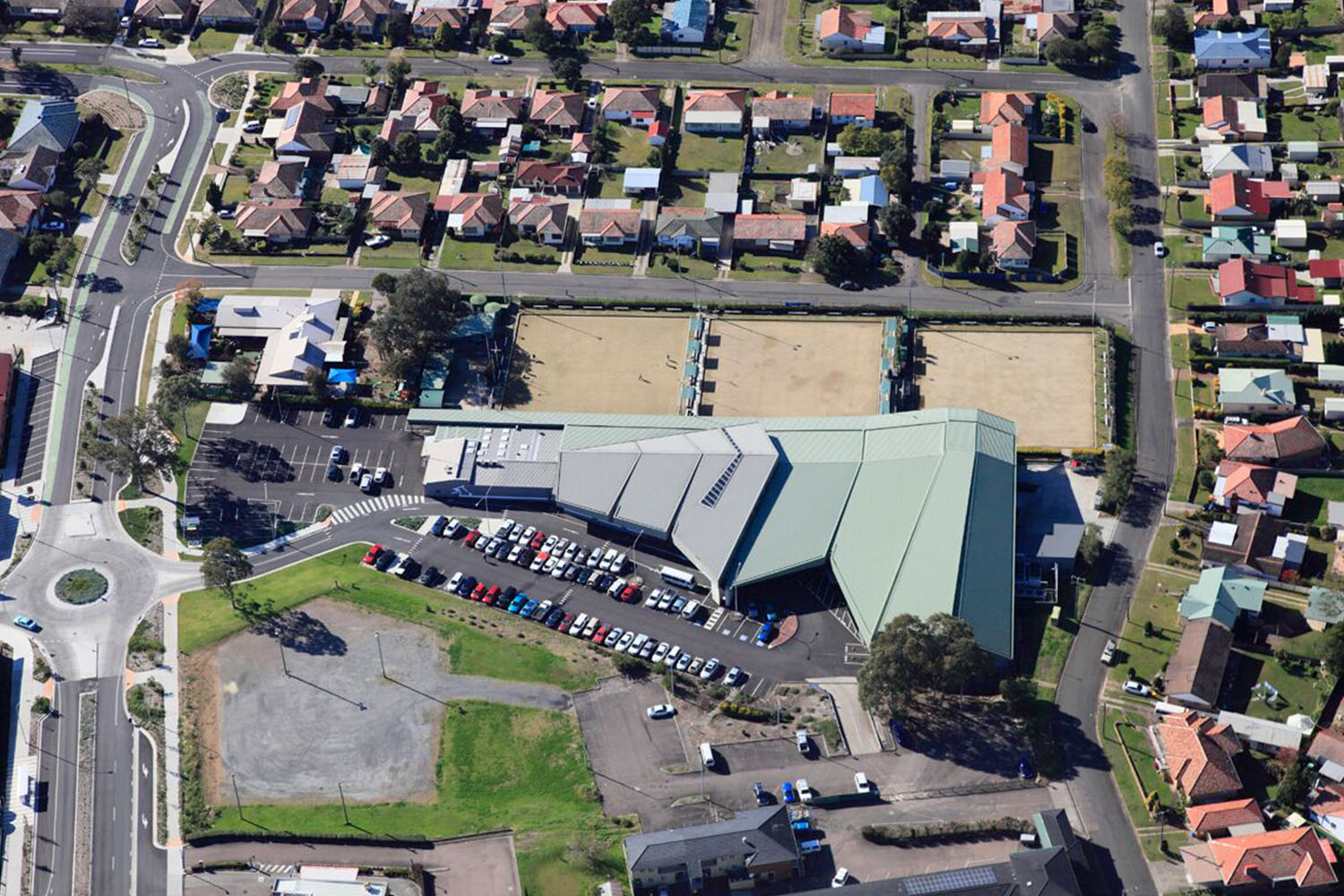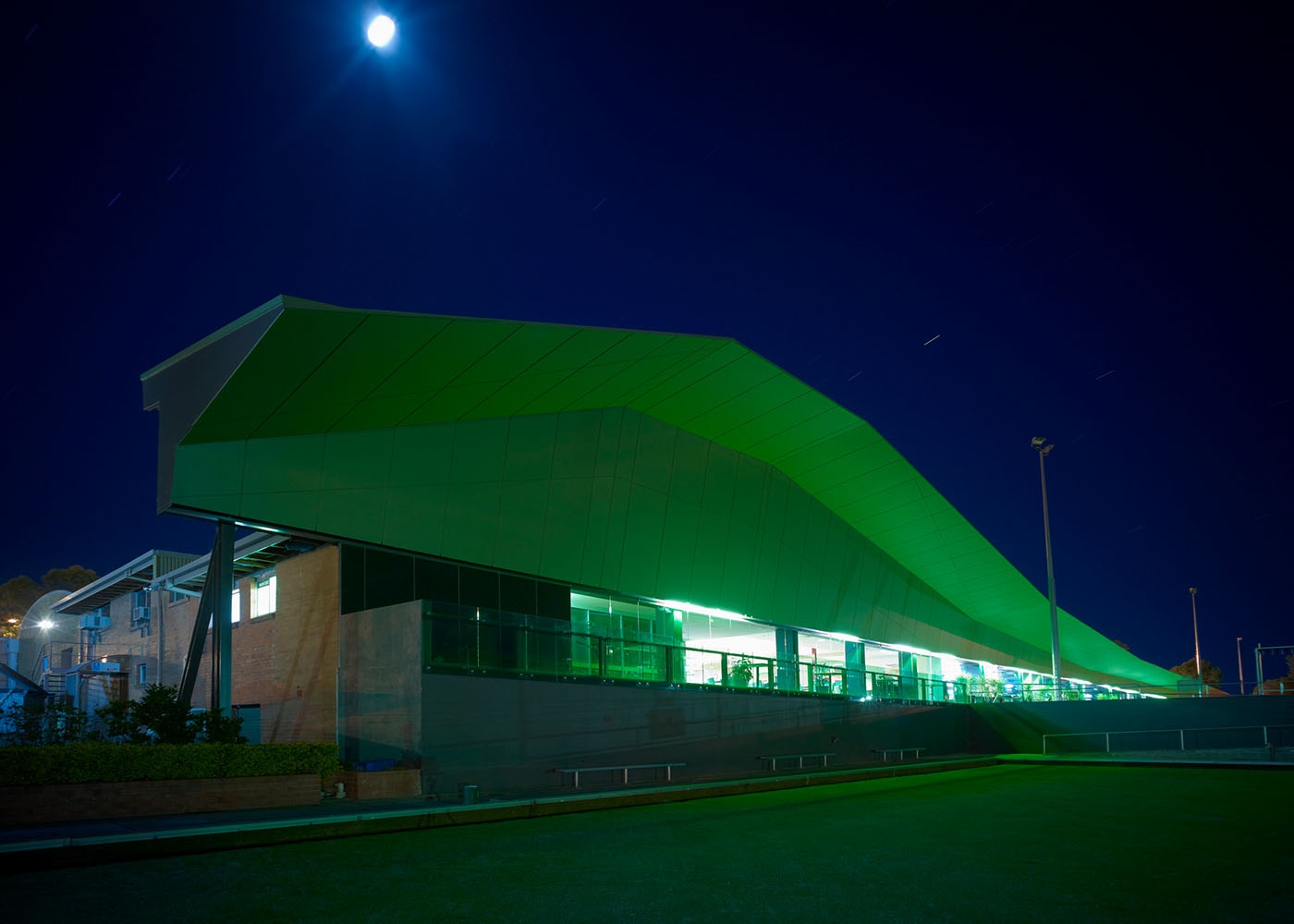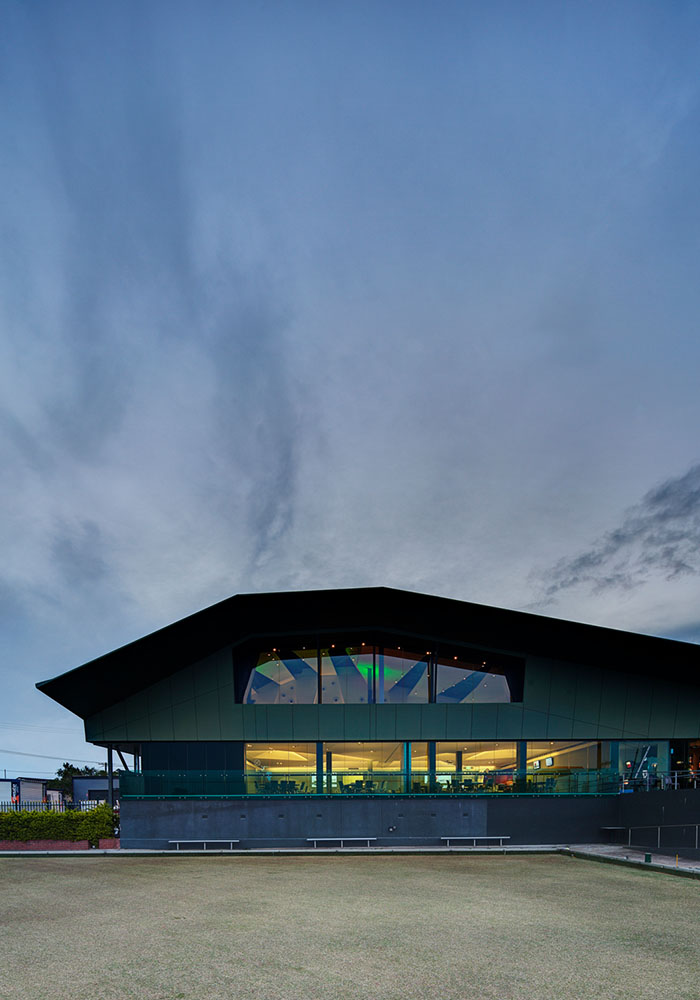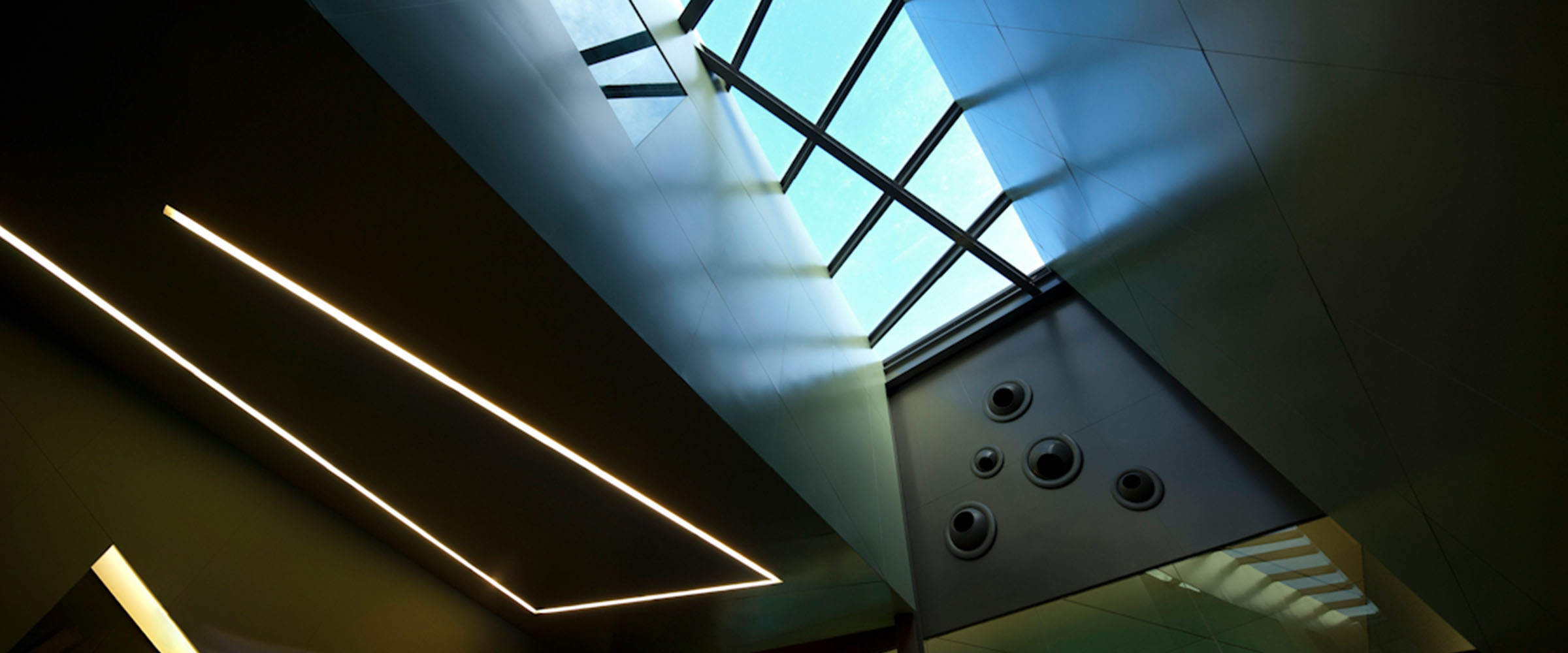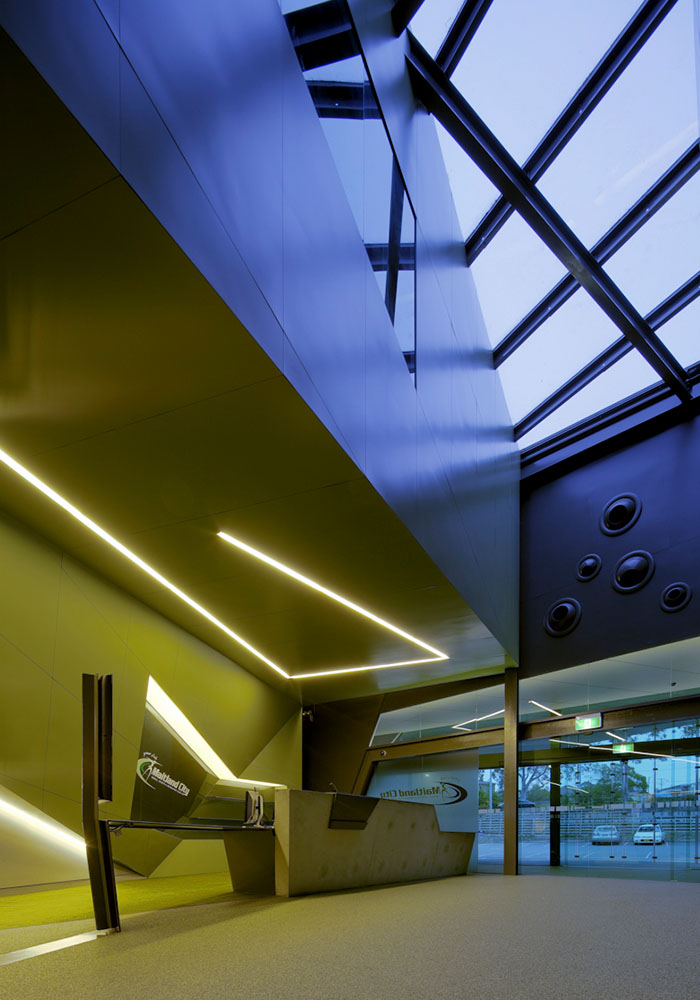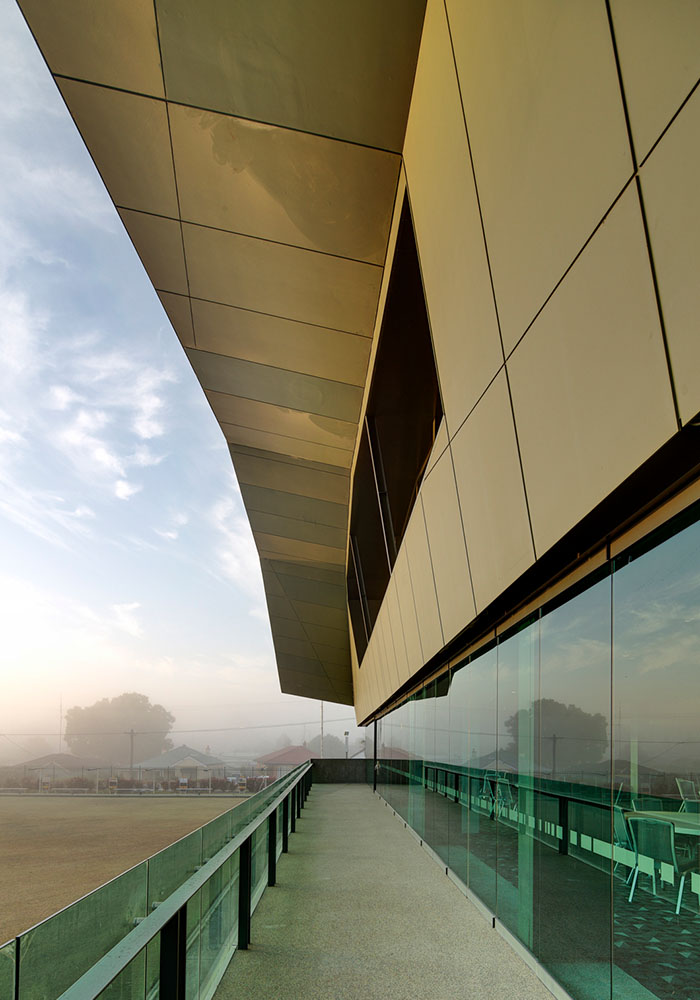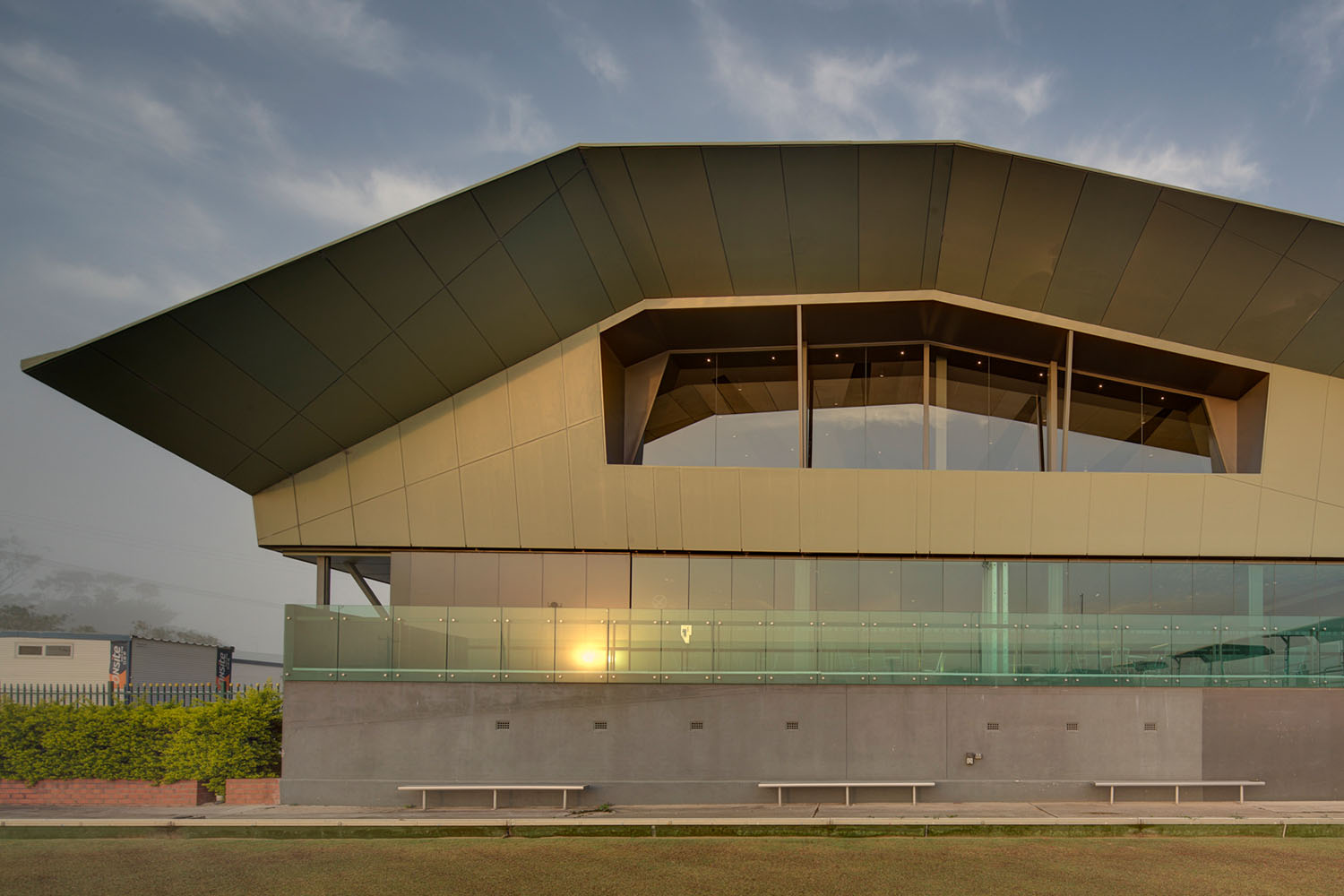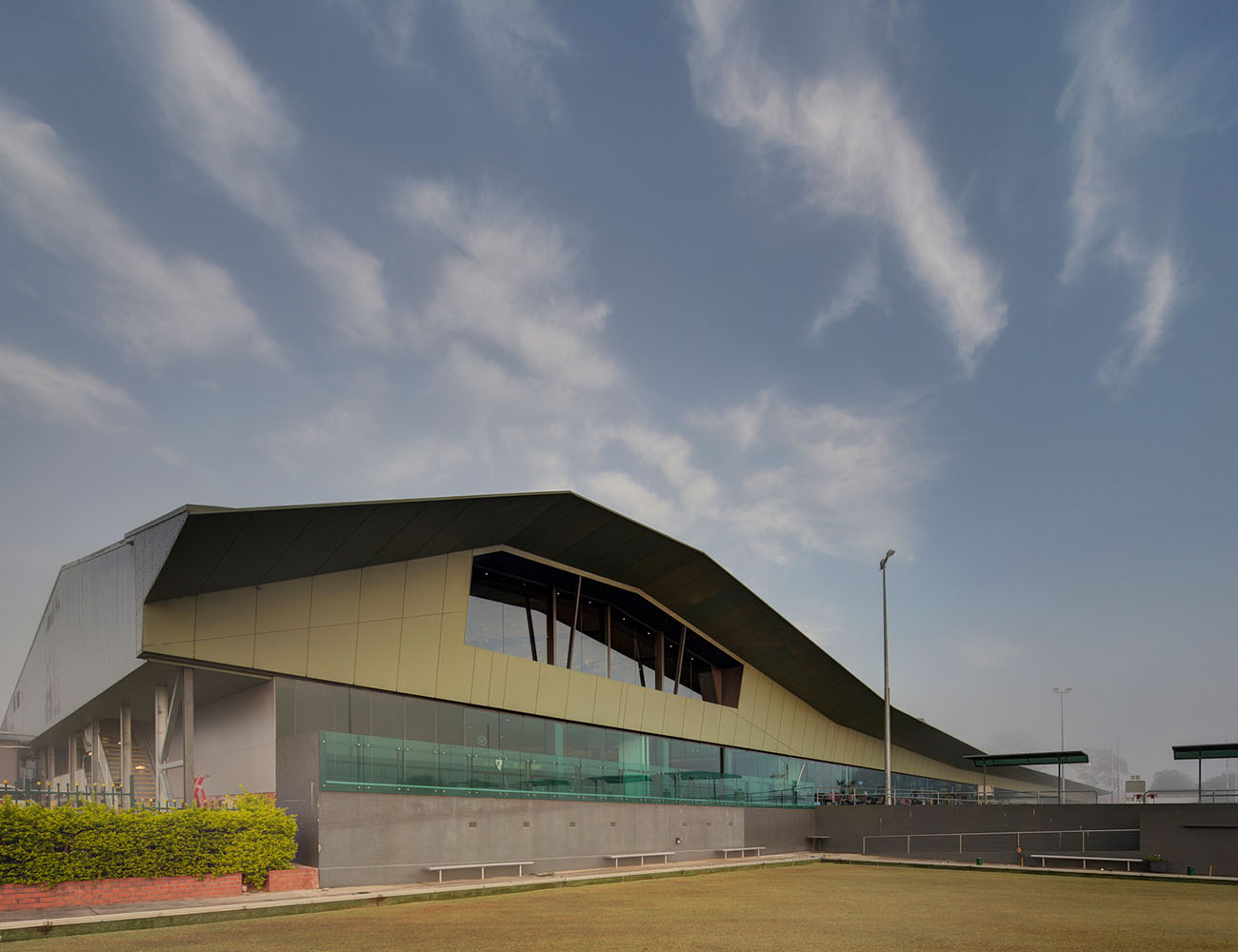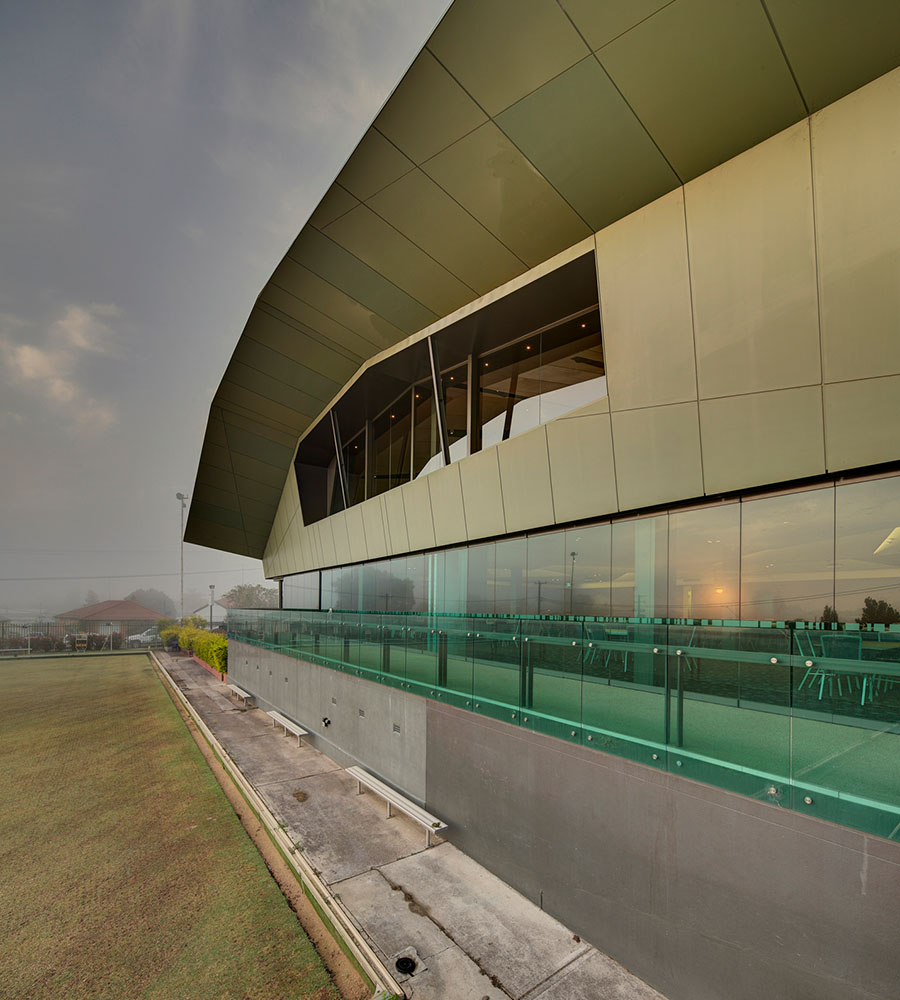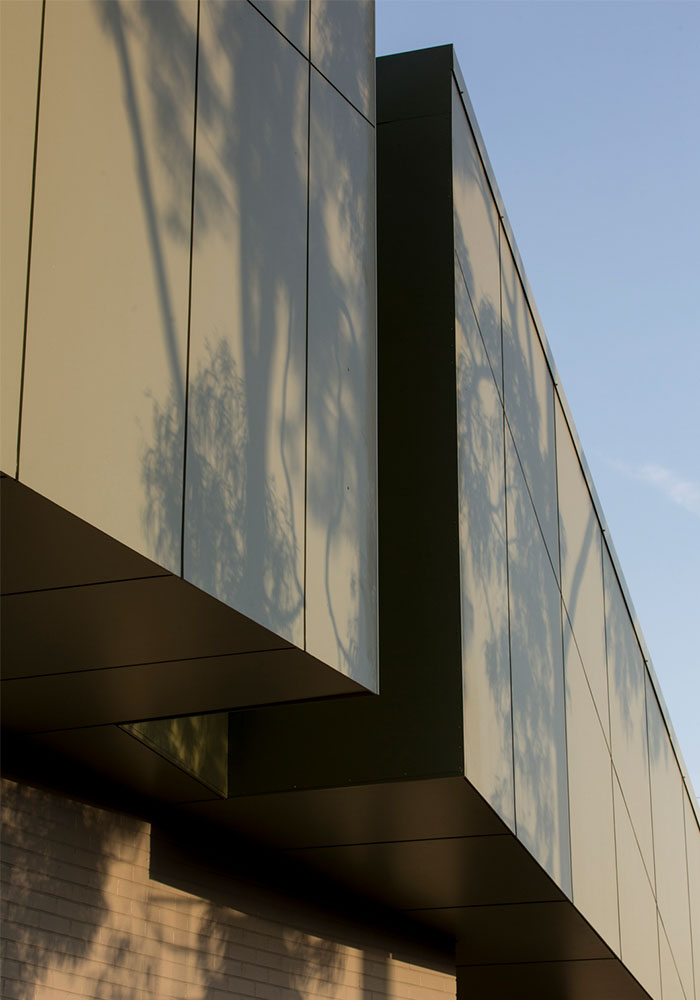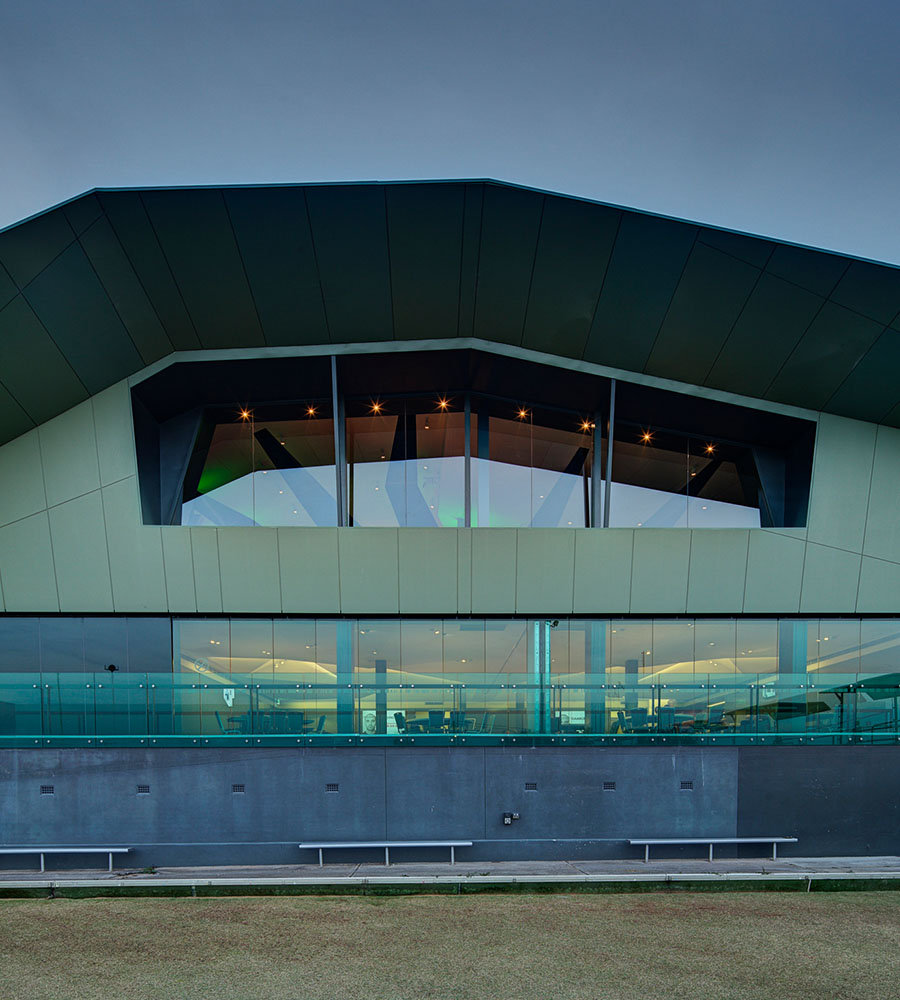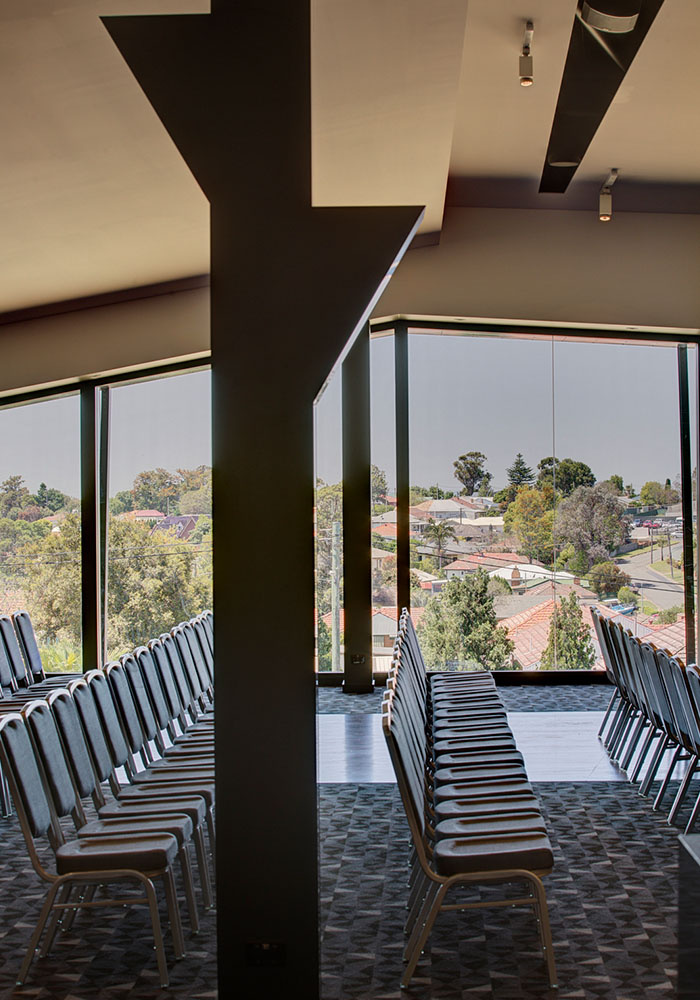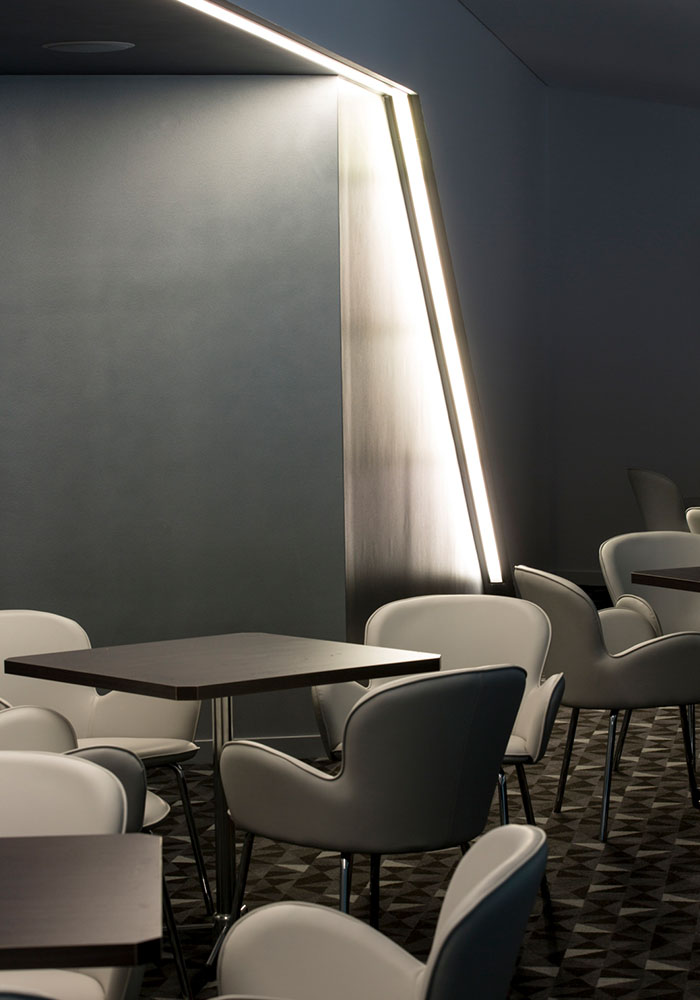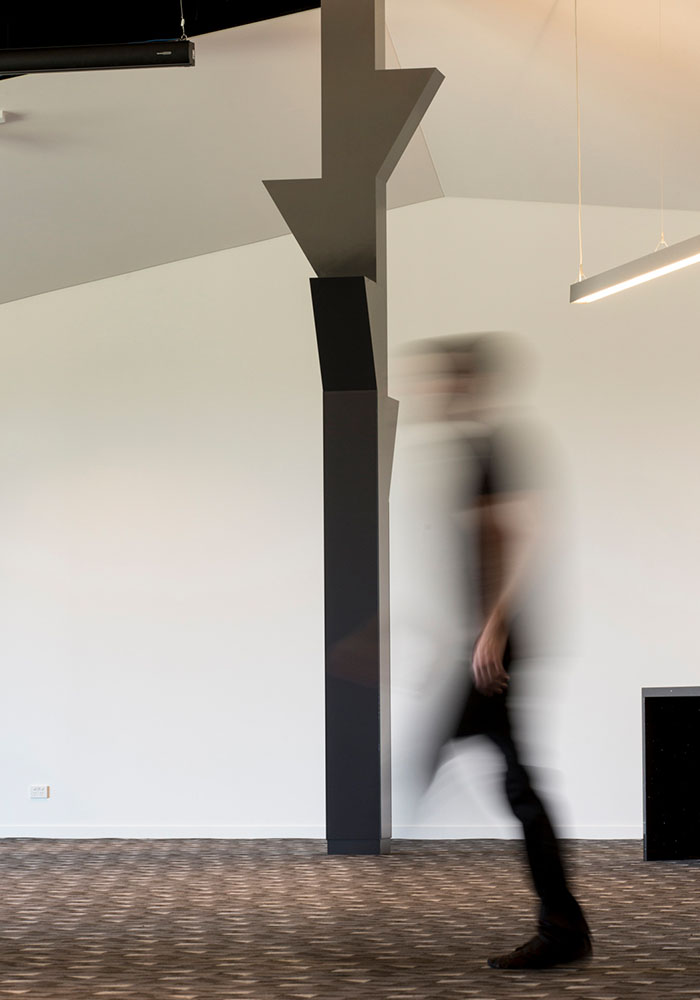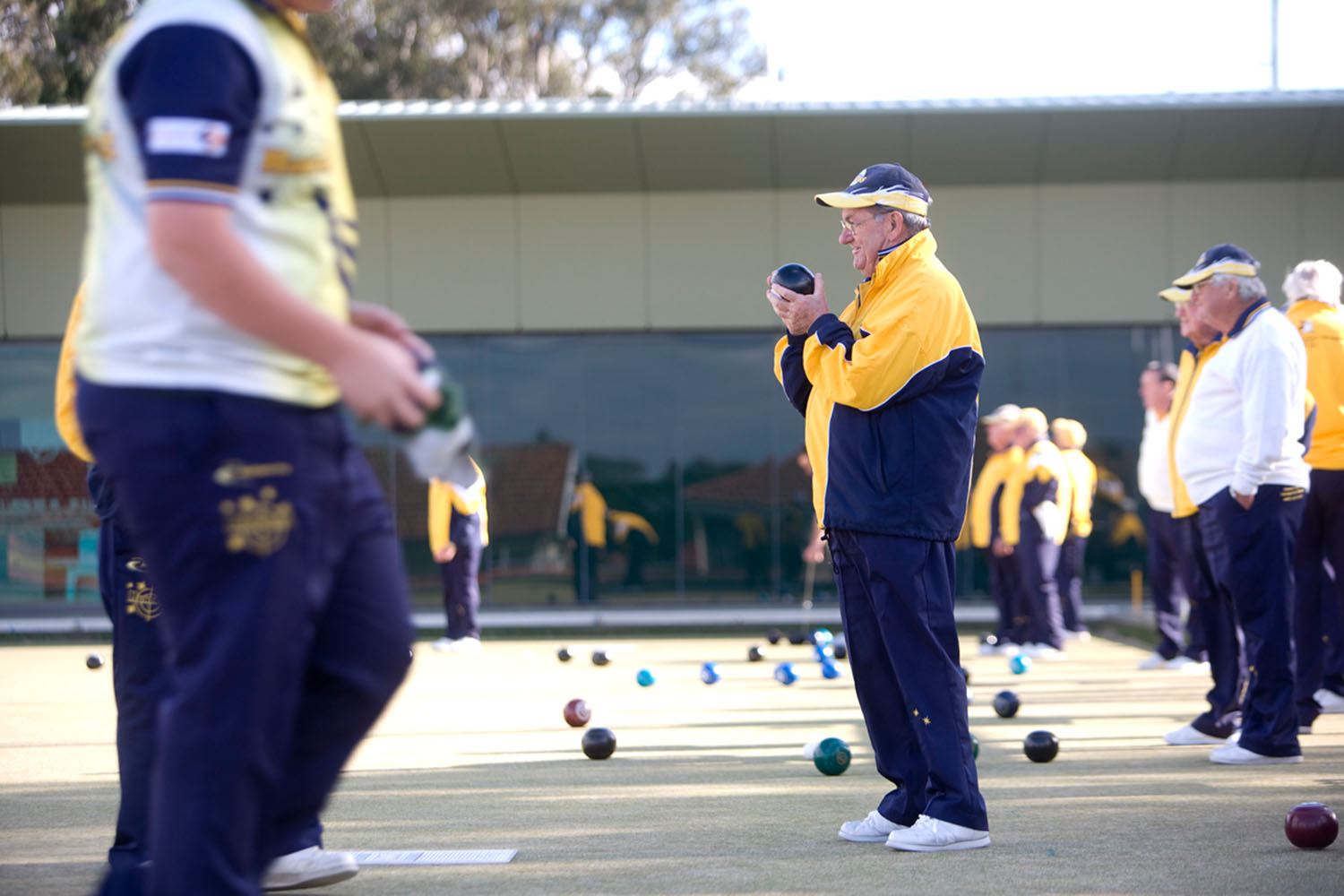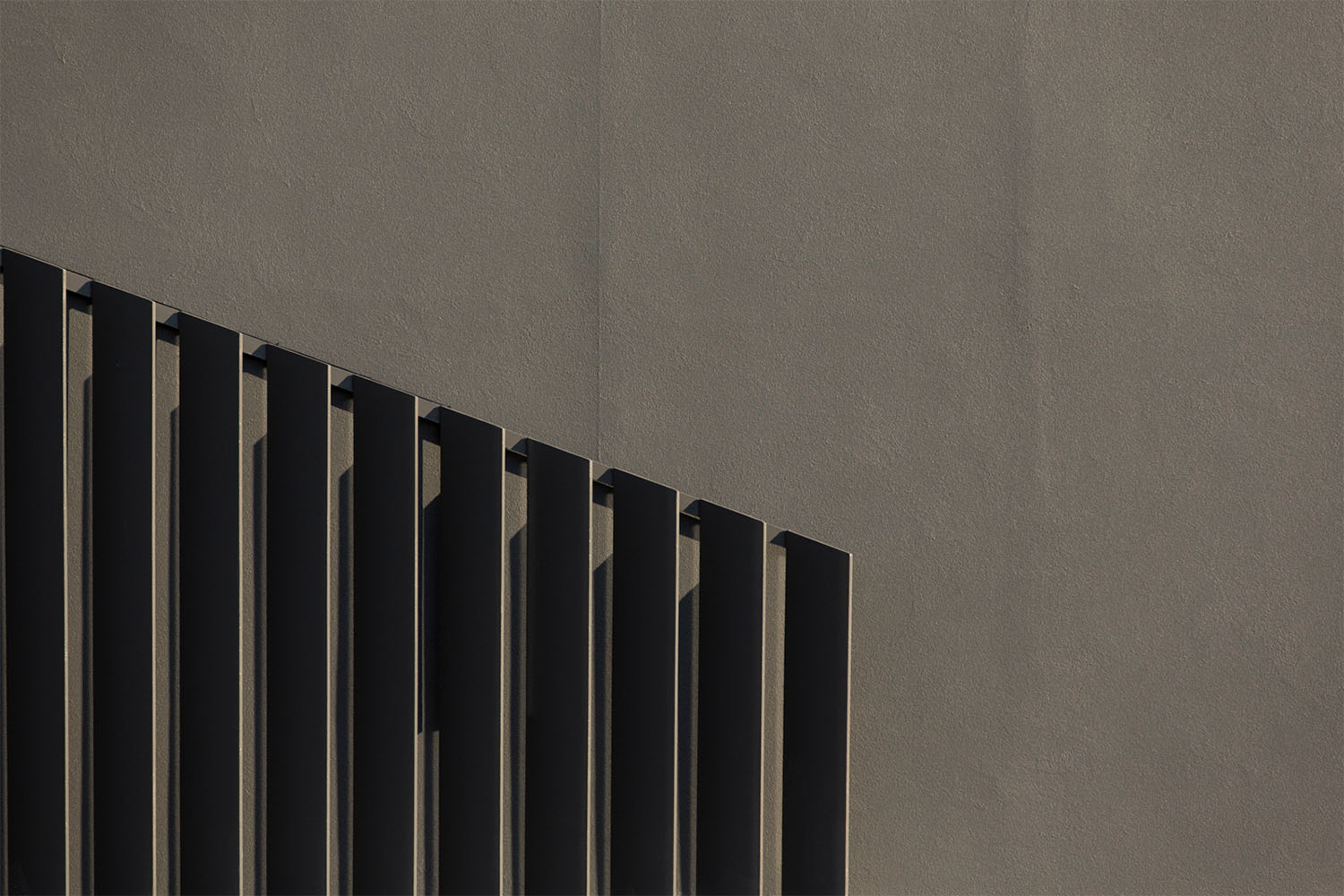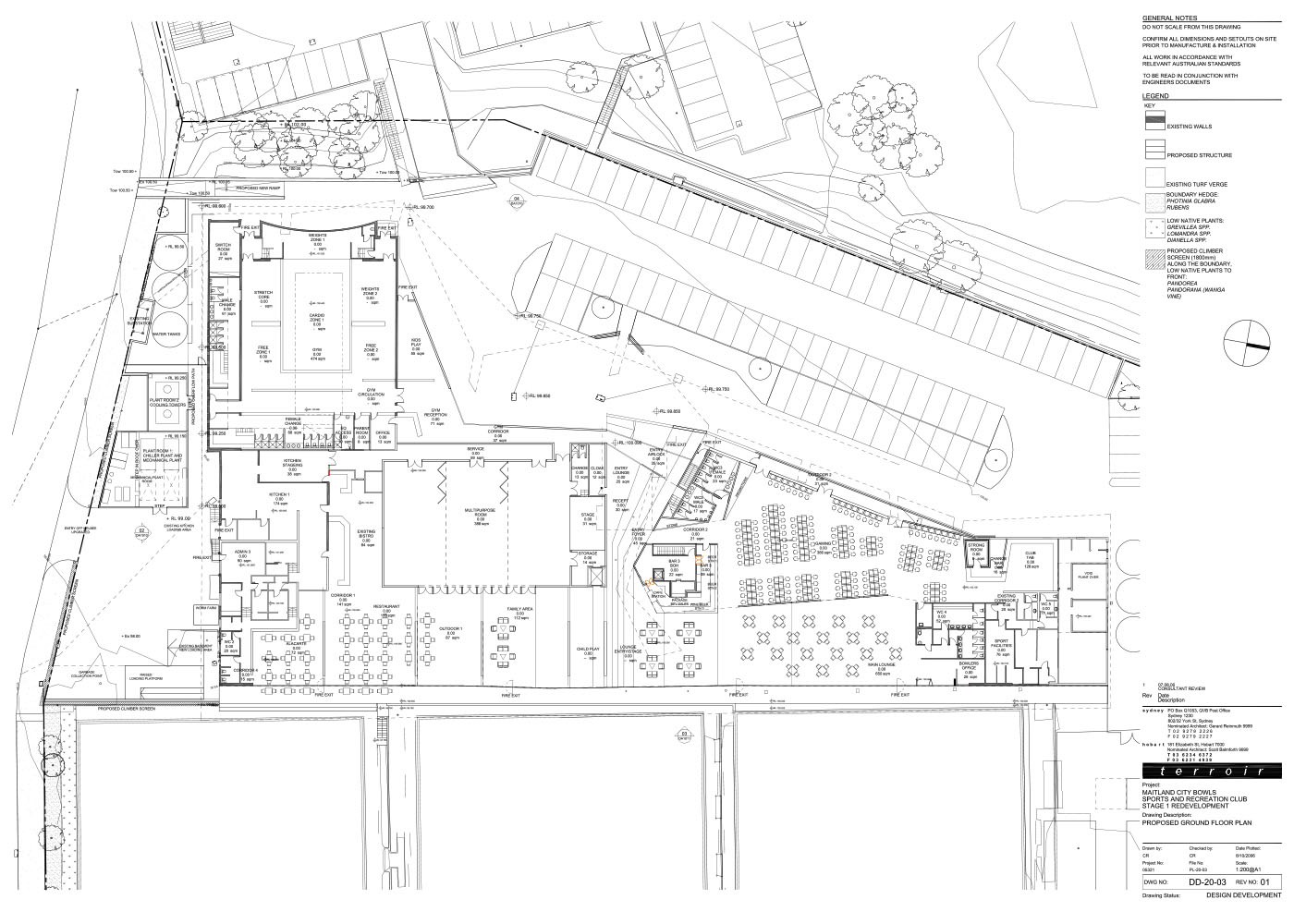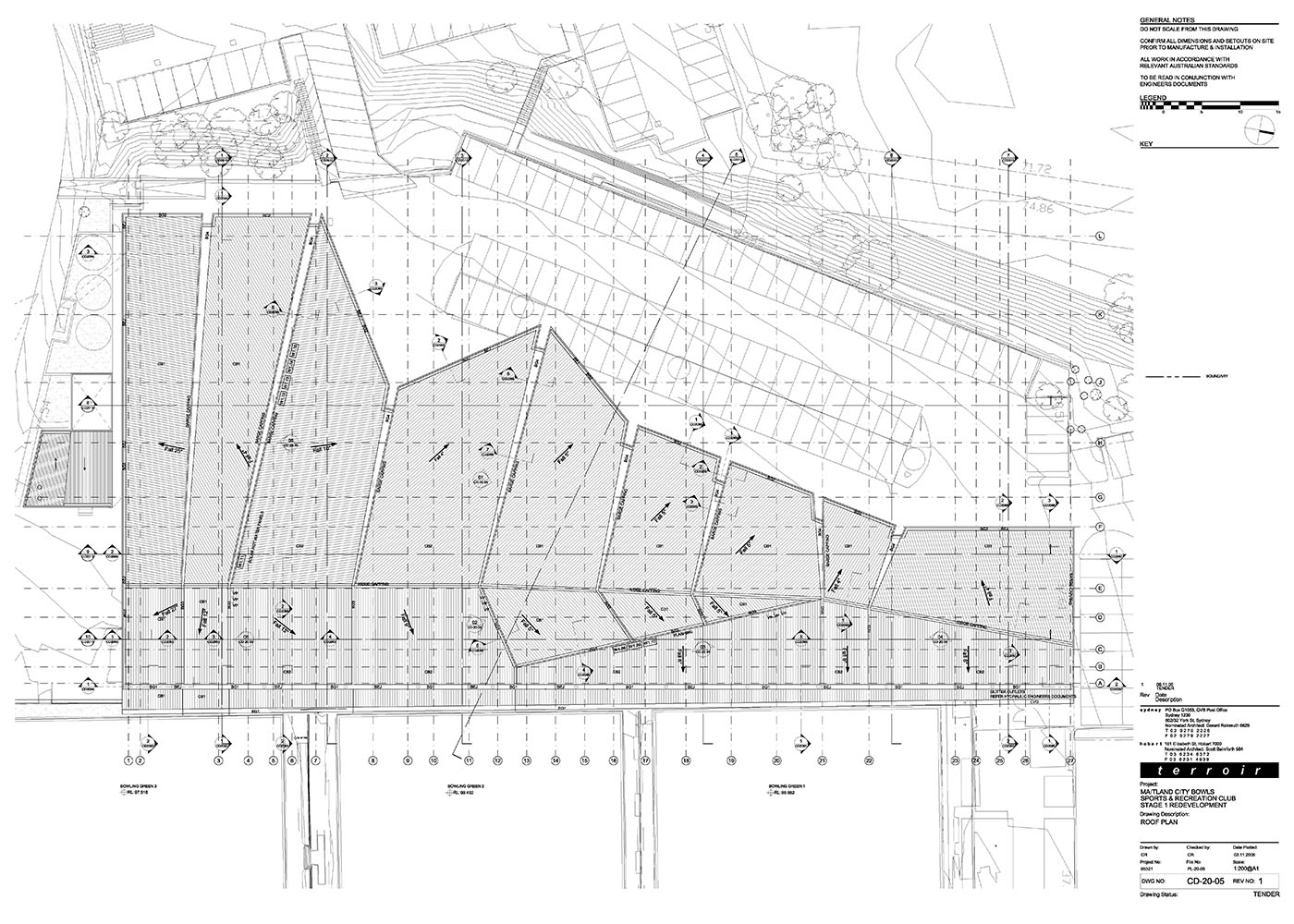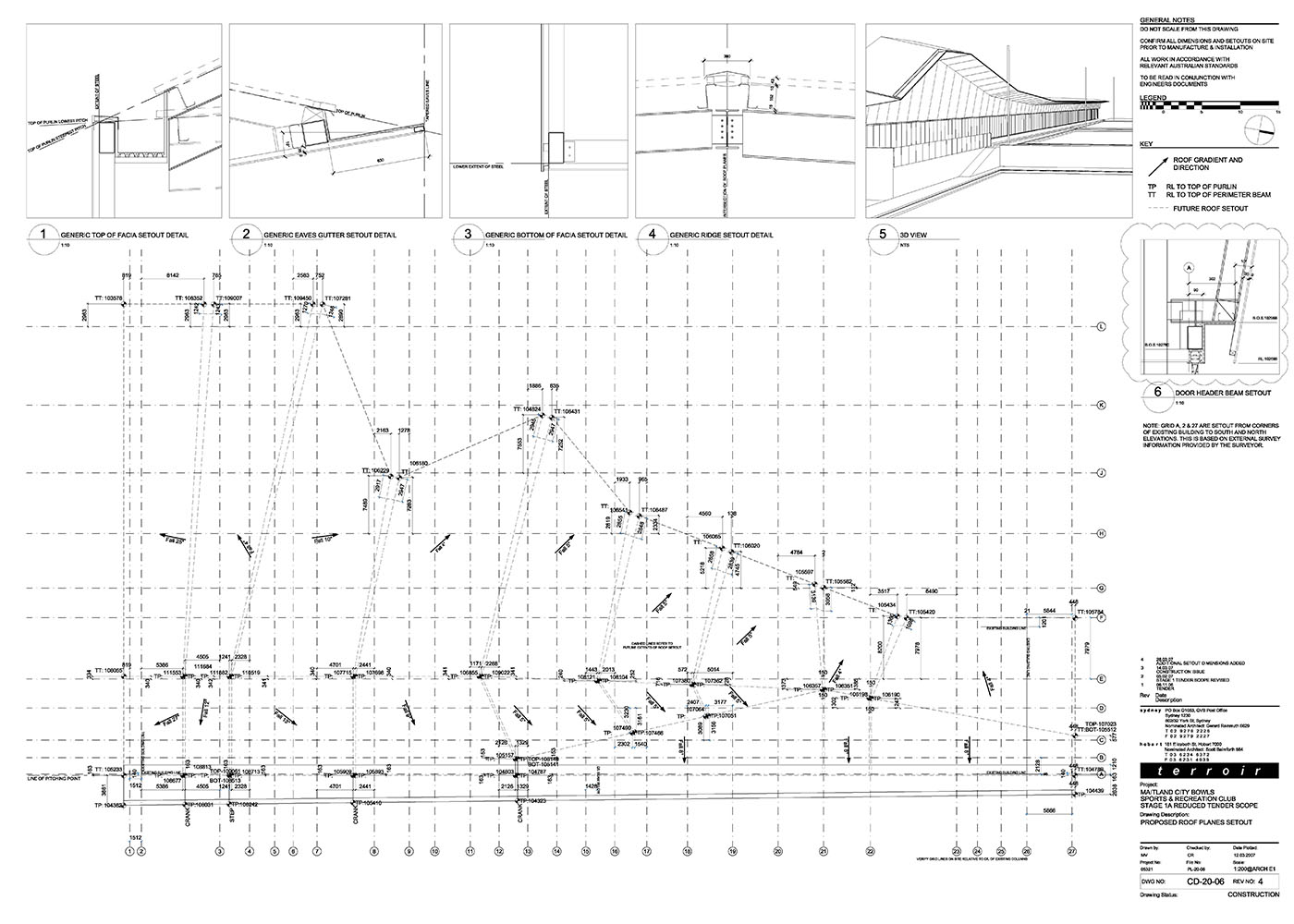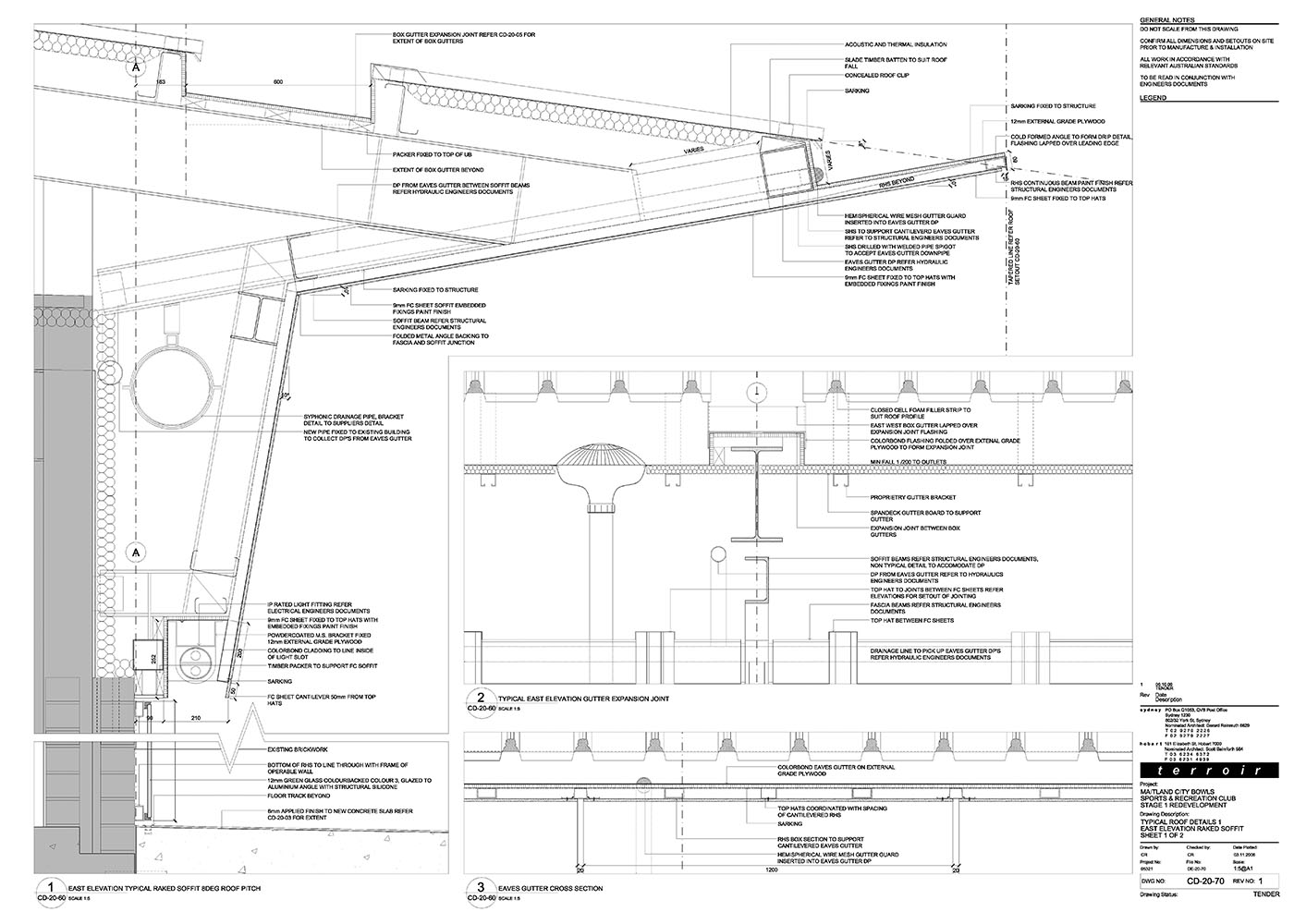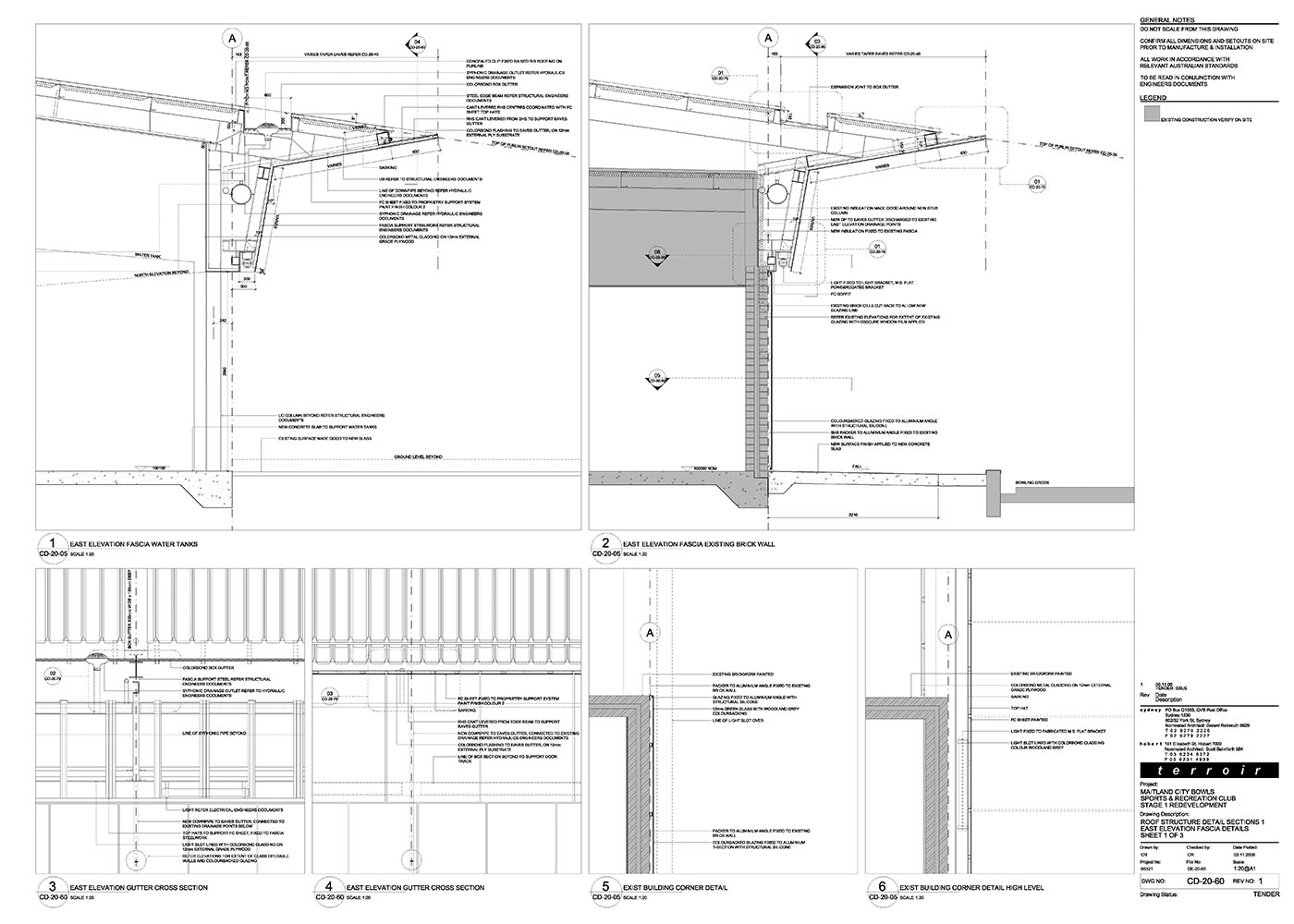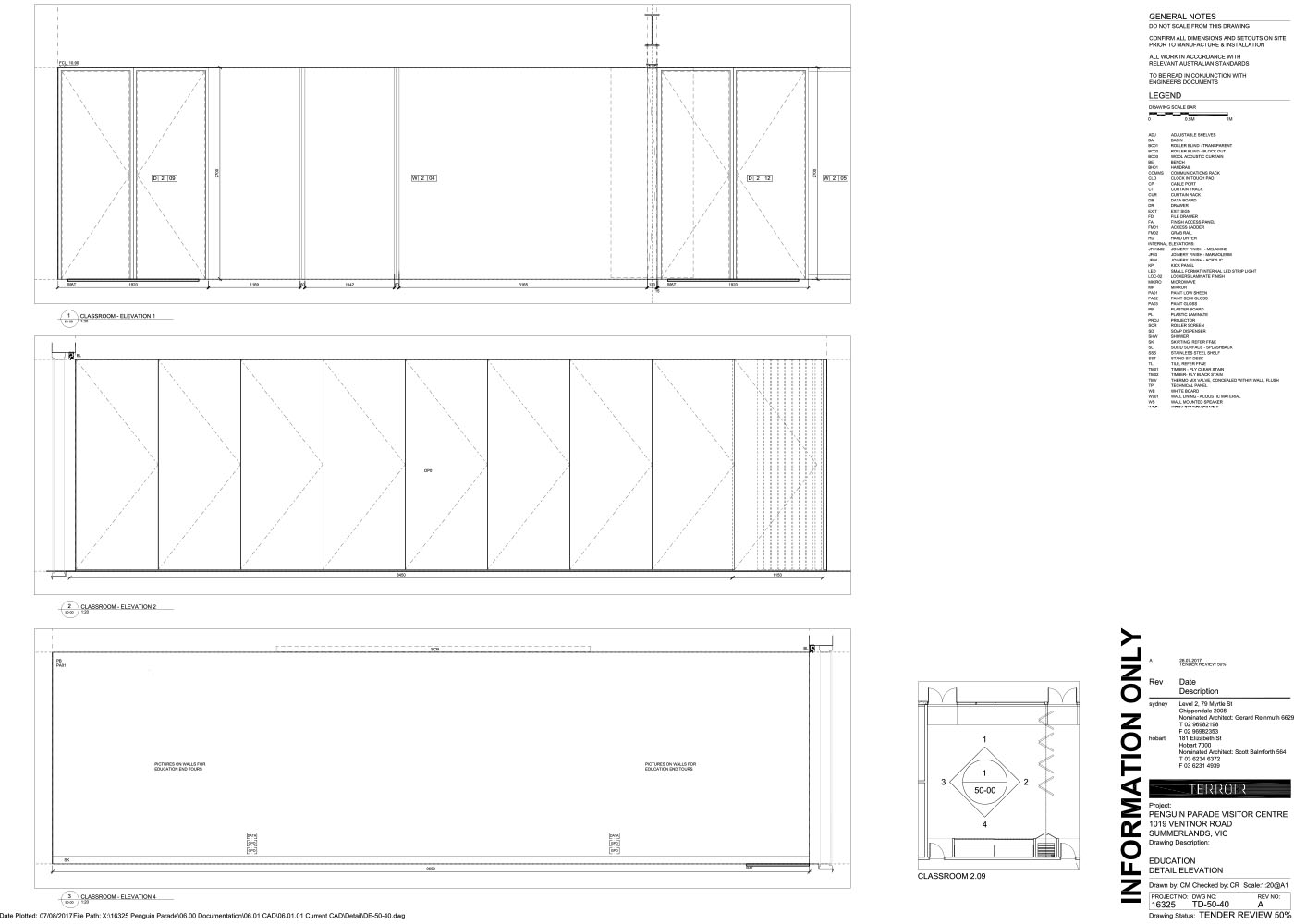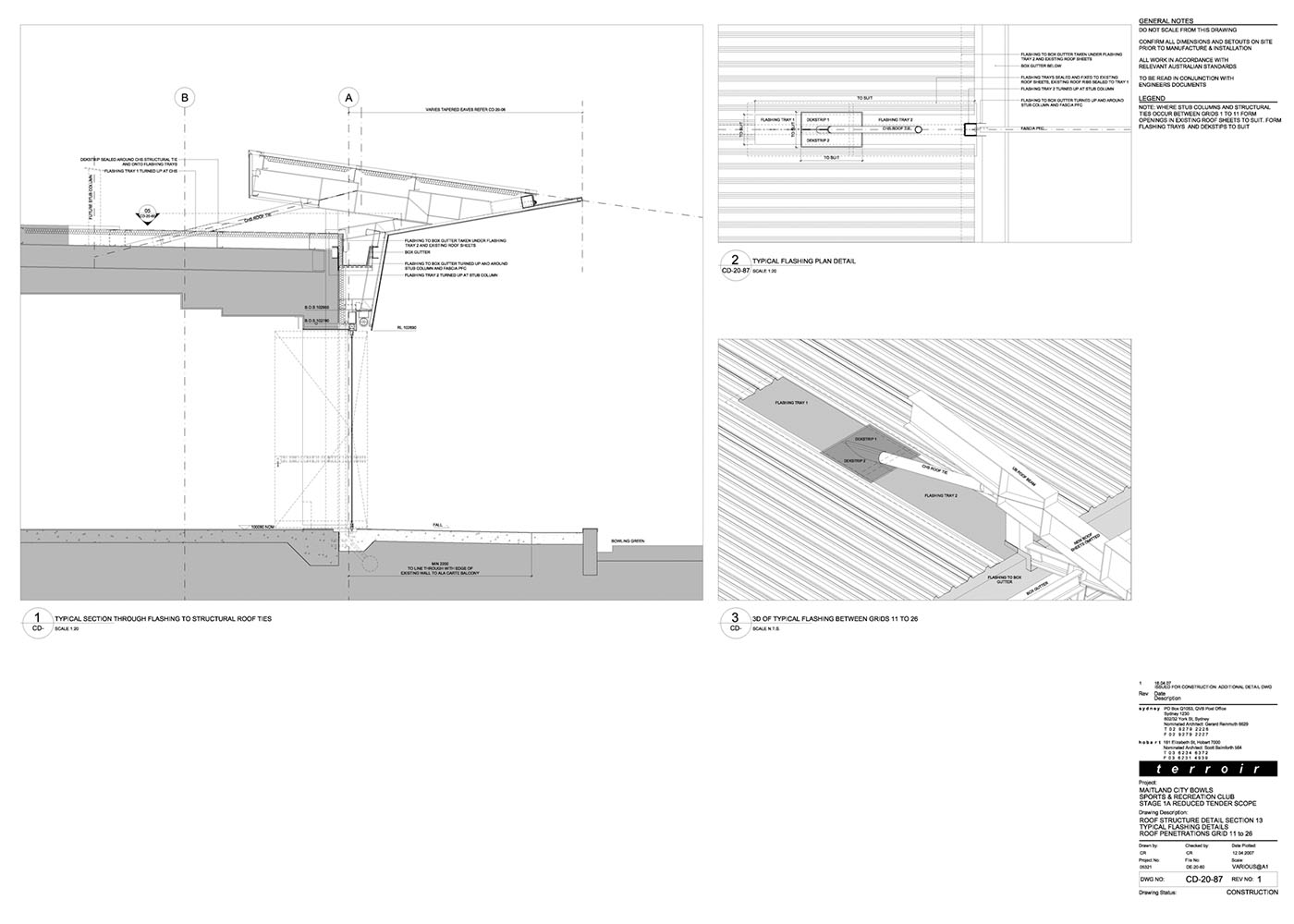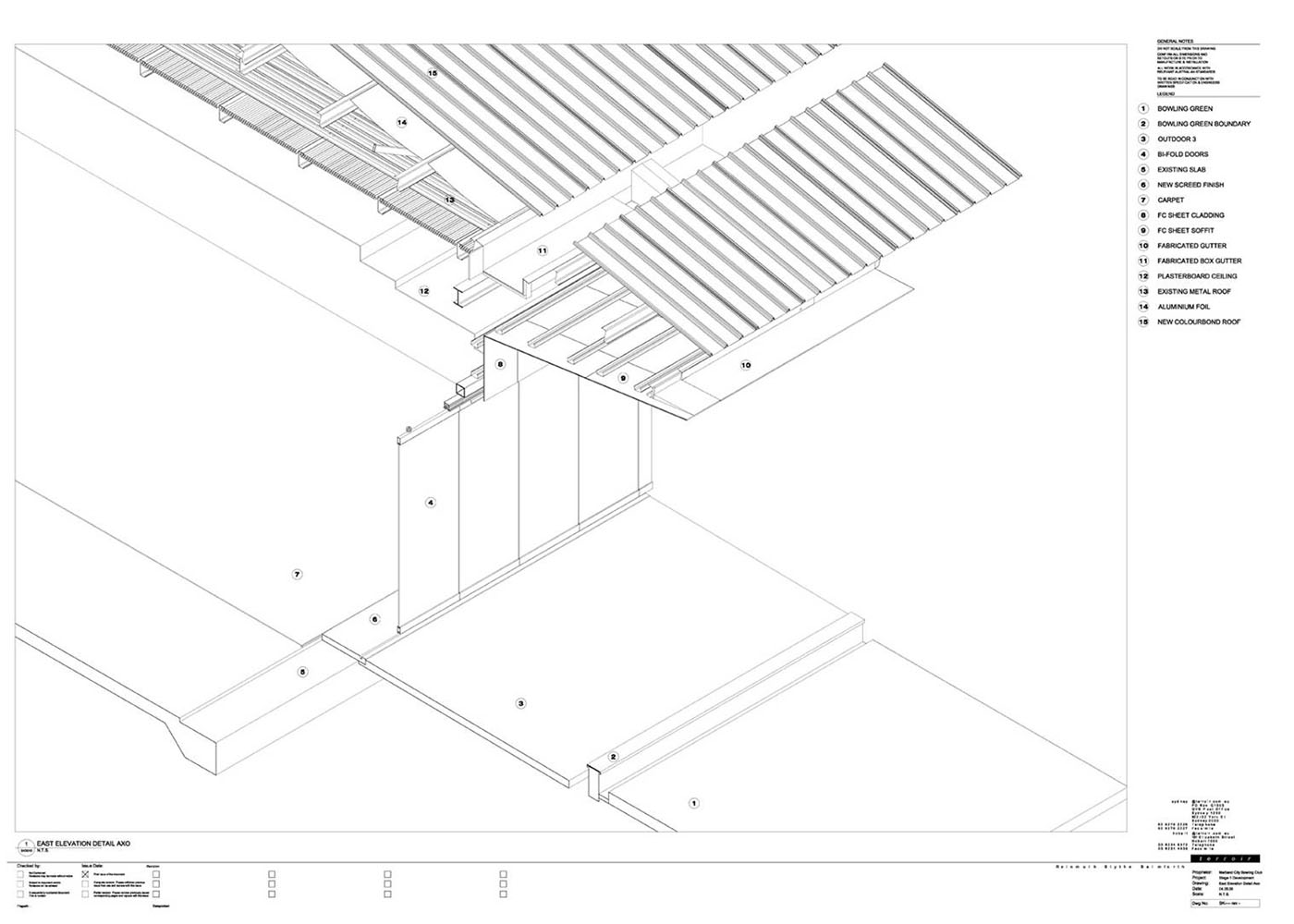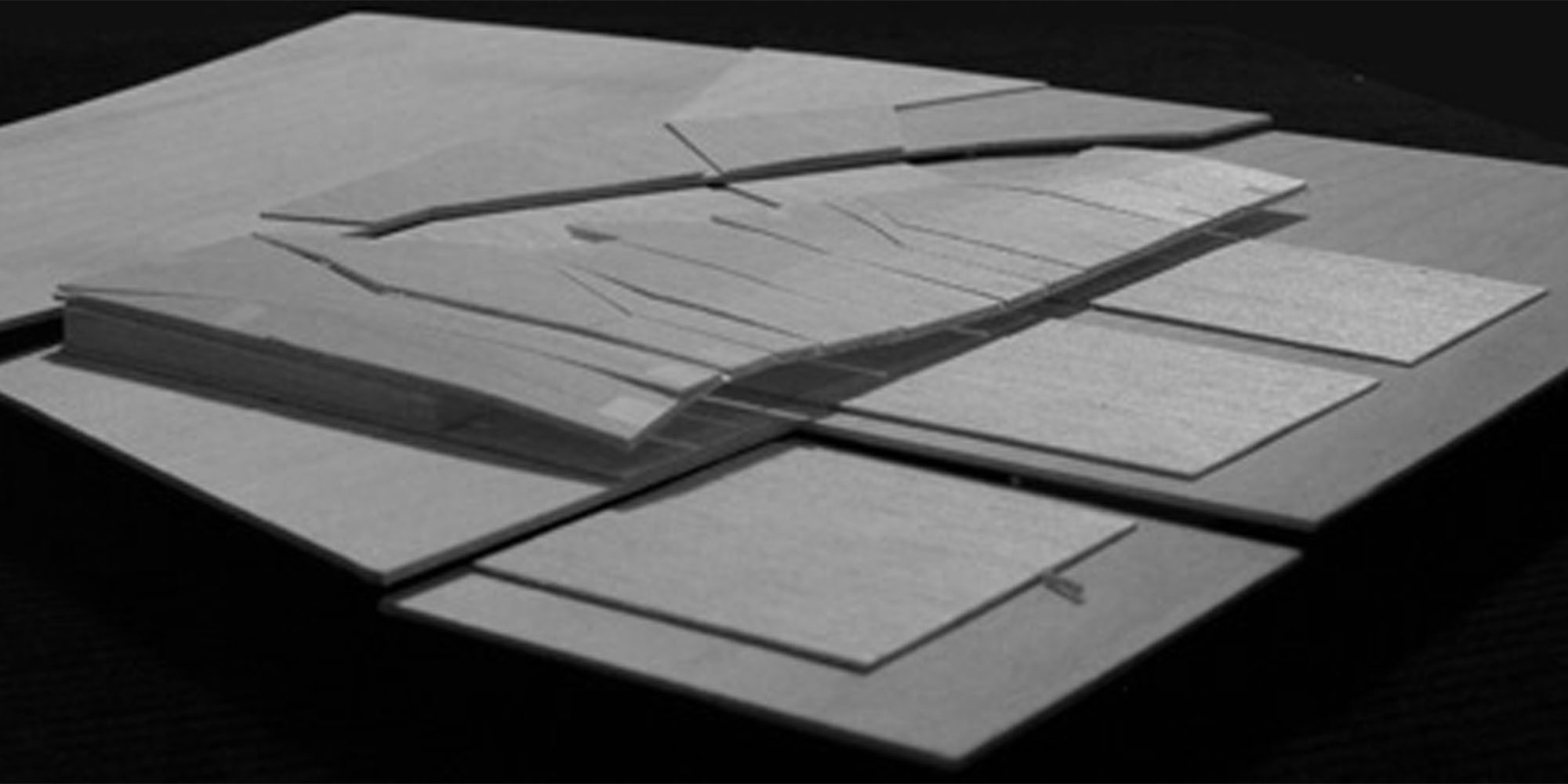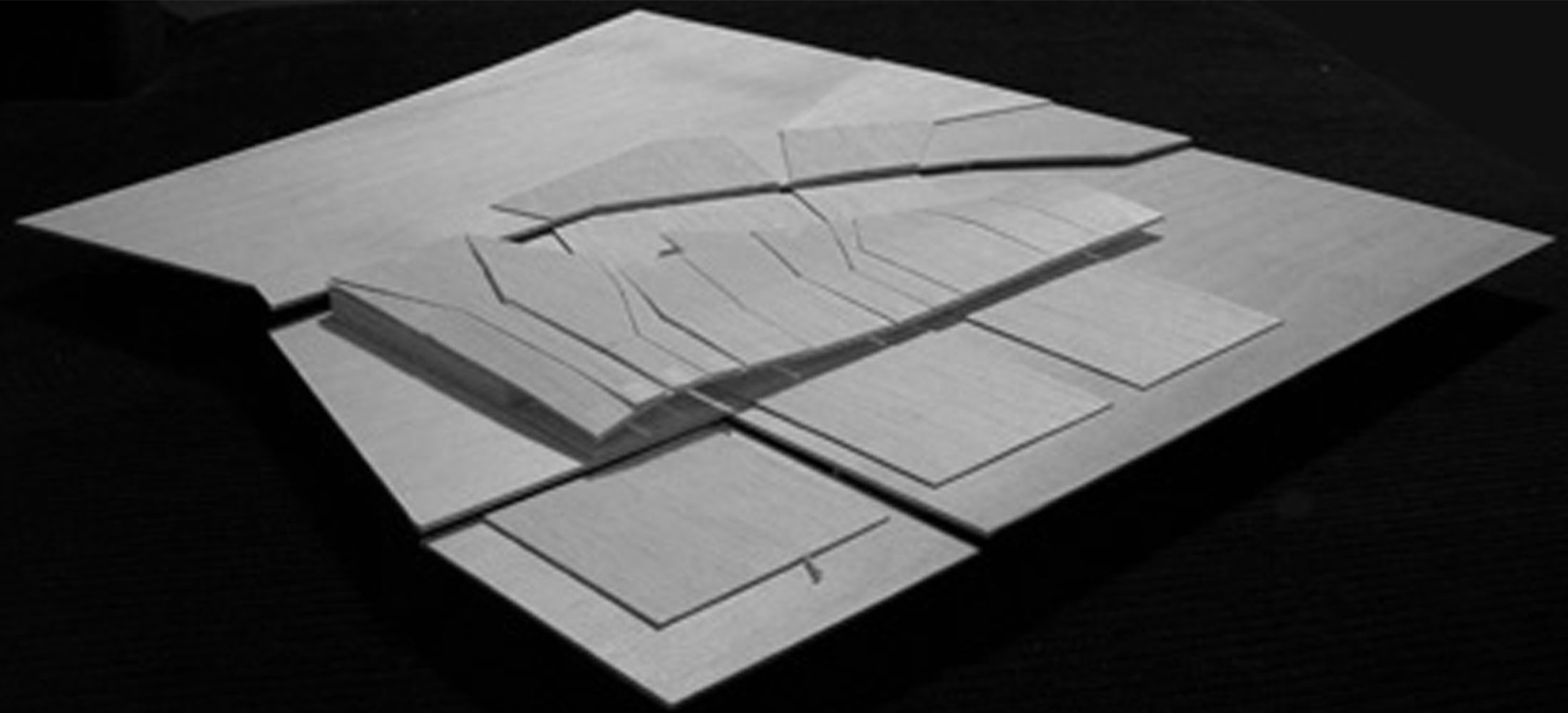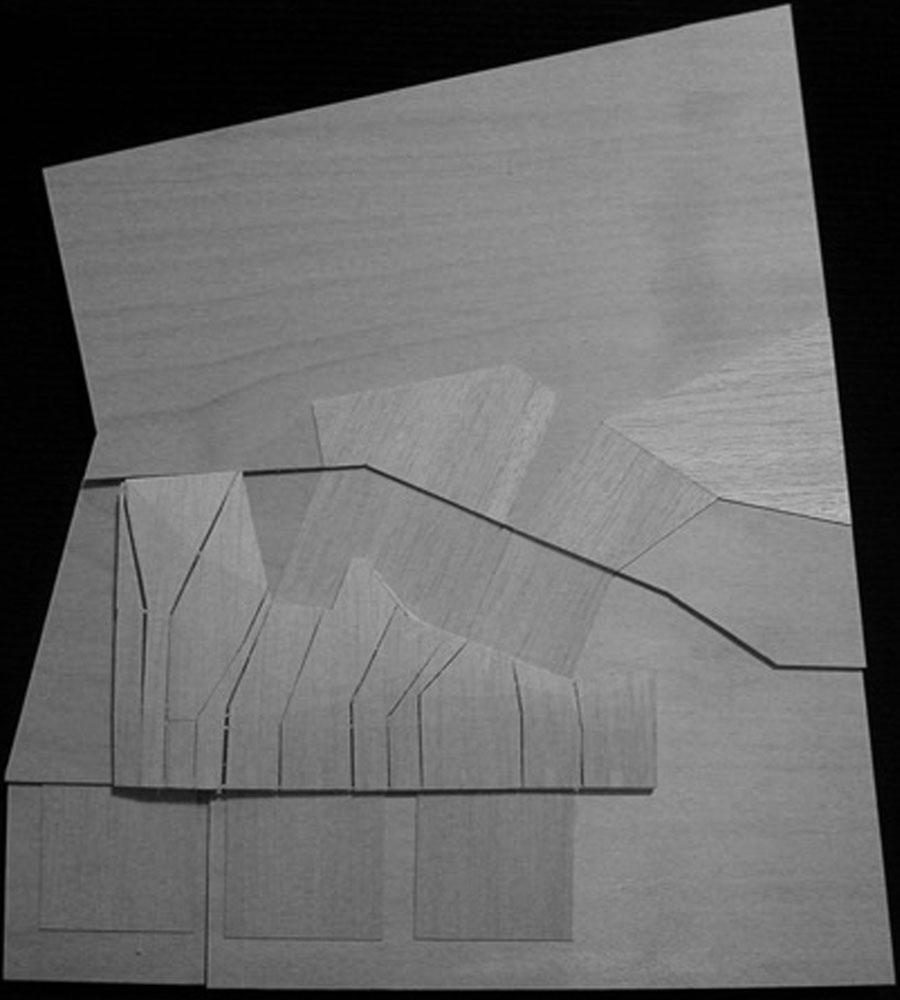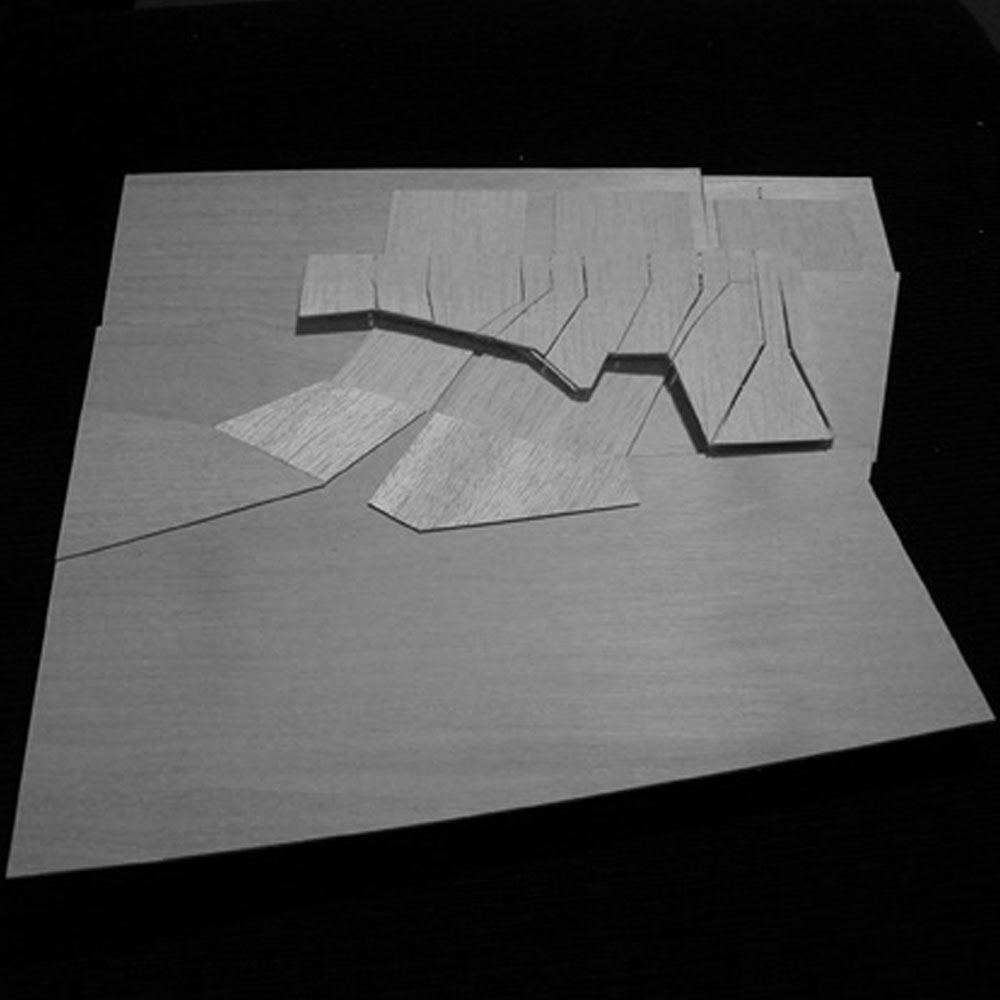-
An exercise in radical sustainability
Maitland City Bowling Club
An existing bowling club required a significant transformation to address energy and occupation issues while signalling a new identity for the club. They understood that a long-term vision was required to ensure that the club could maintain relevance in an ever-changing entertainment and community landscape – a dilemma portrayed in the Australian cinema classic “Crackerjack”. TERROIR’s masterplan, developed in response to a forensic analysis of market and visitation data, gave the club the confidence to transform the building and the organisation over a 10-year period.
The design solution evolved from a need to address these issues in an economical yet substantive manner, and one that enabled a “complete” stage of works while enabling further improvements over time. In all, three major stages of work were undertaken.
The first stage was a new façade and verandah that spanned 110 metres long by two metres wide. It created new internal areas oriented towards the bowling green and contributed to a new brand identity for the club. Most importantly, the new façade vastly improved the building’s energy consumption. A second stage saw the transformation of the foyer, while the third and final stage introduced a series of major new functions spaces. Each stage built on the previous one, minimising redundancy, energy and carbon wastage.
- TYPE Public
- LOCATION Maitland | AU
- YEAR 2009-2014
- PHOTOGRAPHY
APPROACH
Three key elements emerged as essential to the initial phase of work as they could achieve this transformation in a clear and direct manner: a new roof, new servicing, and a new facade facing the bowling greens. The high visibility of the site, the opportunity to respond to the greater landscape context, the need to manage changing servicing requirements, and the need to open up the building to more light and space, led to the solution of a major new roof element. The prominence of the roof meant it could signal a major rebranding of the club, while functionally, it acted as a new “backpack”, enabling and containing efficient building services, while also acting as a giant rain harvester and solar parasol. Subsequent stages focused on circulation and function spaces to ensure the economic growth of the Club could occur alongside a major change in identity and sustainability credentials.
